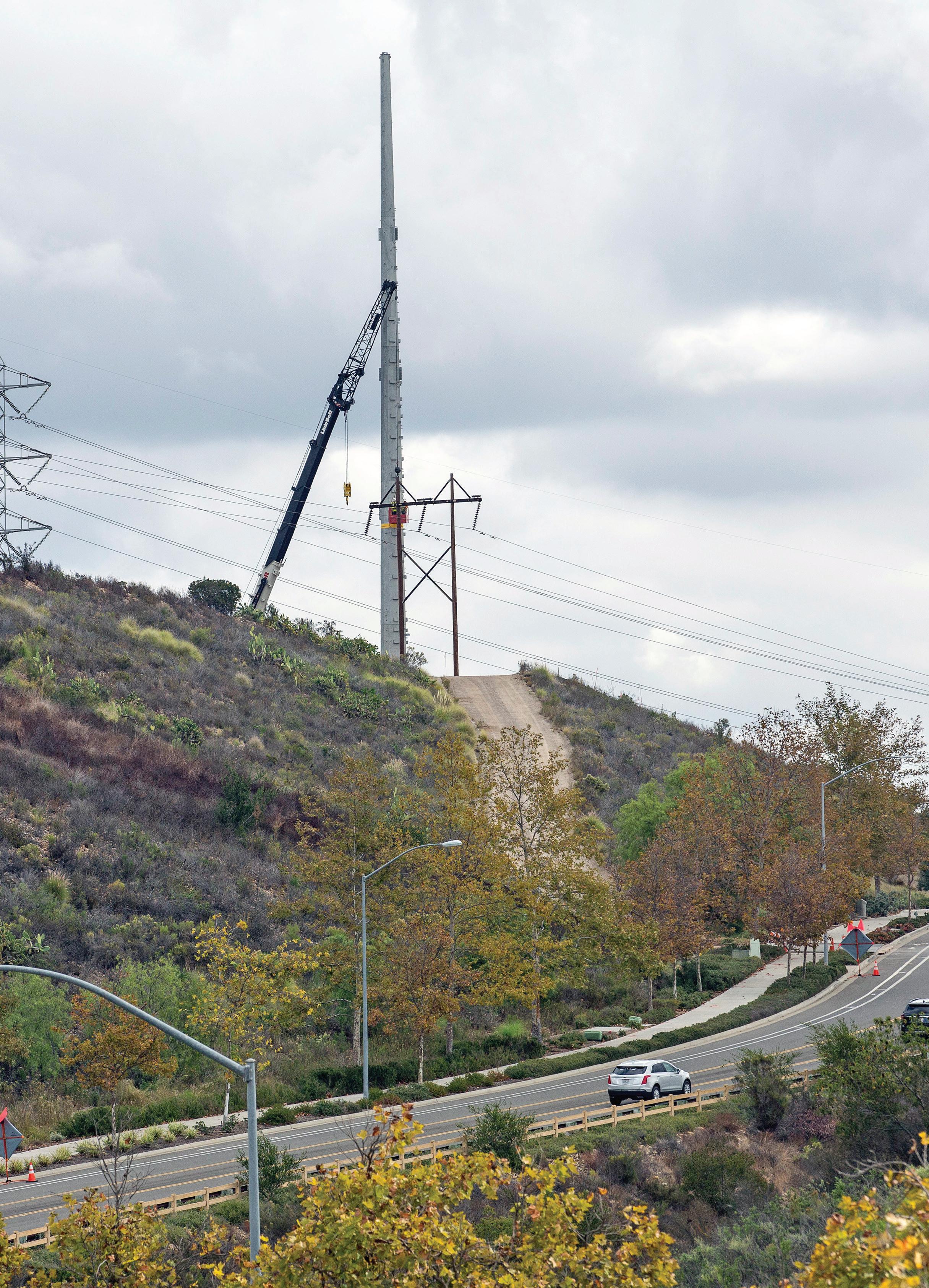



















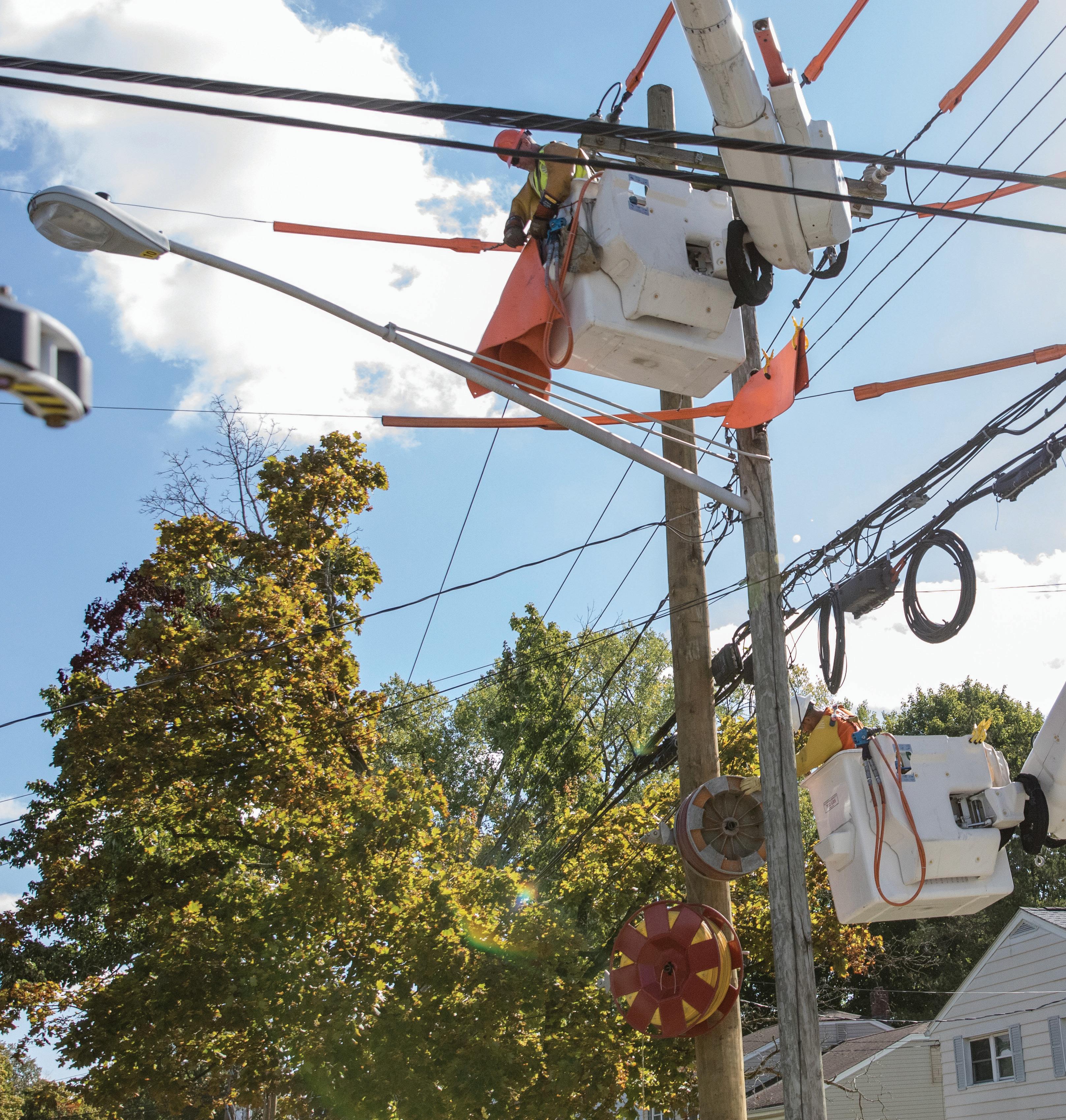


ONE CALL connects you to the full range of vegetation management, utility infrastructure, digital innovation and storm/emergency restoration services from the Asplundh family of companies. With a single point of contact, our rapid-response team can quickly scale our highly trained workforce, specialized equipment and best-in-class solutions to meet your most demanding utility construction and maintenance needs. One call is all it takes to make a powerful connection to the people, technology and resources that keep your operations moving forward.











With a craft-skilled labor force of over 63,000 across 300 operating companies, Quanta is North America’s largest critical infrastructure solutions provider. BUILT TO SOLVE.

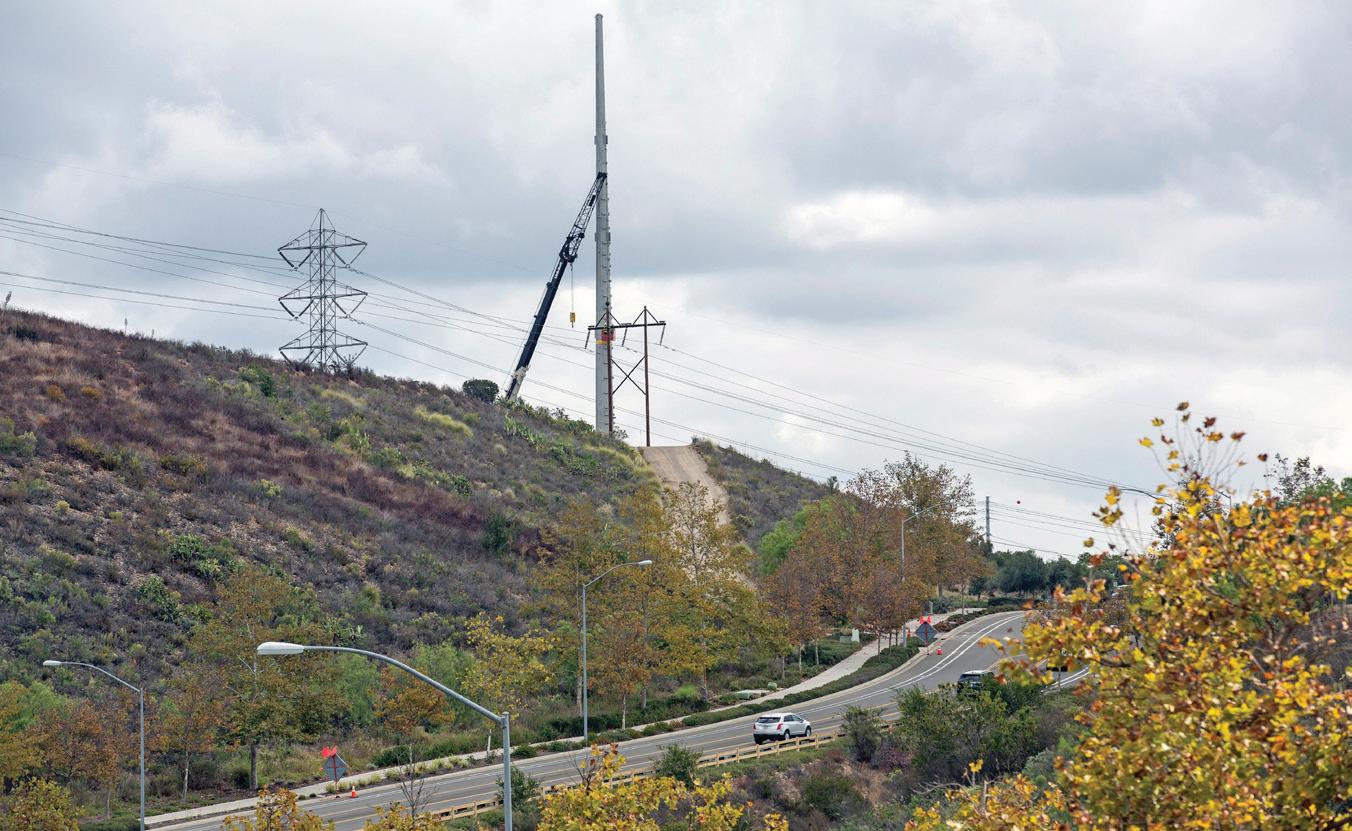



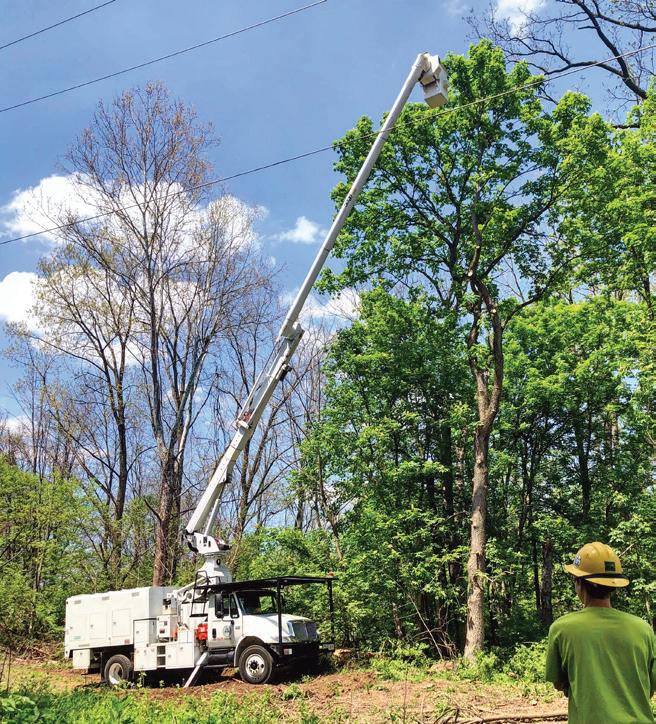


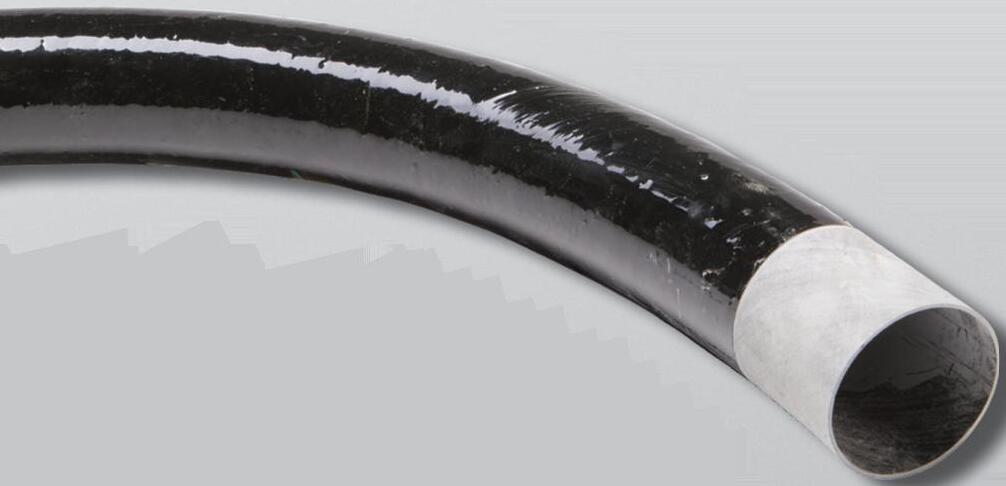
No burn-through eliminates elbow repairs
Lower materials and installation costs
Mechanical strength protects conductors
Low coefficient of friction for smooth pulls
Operable in temperatures of -40 degrees to +230 °F
Height adjustable expandable utility risers for easy installation













The T&D World Podcast team reunited to reflect on the biggest conversations from T&D World Live 2025, a three-day conference that brought together hundreds of utility professionals, engineers, and technology leaders to discuss the future of the electric grid. https://www.tdworld.com/55322103

Why the Future of Renewable Integration Depends on Choosing the Right Technology Grid-forming inverters have a critical role in enabling high renewable energy penetration. https://tdworld.com/55320228
How AI is Reinventing the Grid, One Algorithm at a Time

AI is no longer on the fringe of utility operations, it’s embedded in the field, in control rooms, and increasingly, in the planning layers of the grid. https://tdworld.com/ 55320222
Group Editorial Director Nikki Chandler nchandler@endeavorb2b.com
Managing Editor Jeff Postelwait jpostelwait@endeavorb2b.com
Senior Editor Christina Marsh cmarsh@endeavorb2b.com
Art Director Julie Whitty jwhitty@endeavorb2b.com
Field Editor Amy Fischbach EOUeditor@endeavorb2b.com
Technical Writer Gene Wolf GW_Engr@msn.com
Senior Editor-at-Large Geert de Lombaerde gdelombaerde@endeavorb2b.com
VP, Customer Marketing Angie Gates agates@endeavorb2b.com
Senior Production Operations Manager Greg Araujo garaujo@endeavorb2b.com
Ad Services Manager Shirley Gamboa sgamboa@endeavorb2b.com
Audience Marketing Manager Sonja Trent strent@endeavorb2b.com
Audience Development Manager James Marinaccio jmarinaccio@endeavorb2b.com
Endeavor Business Media, LLC
CEO: Chris Ferrell
COO: Patrick Rains
CRO: Paul Andrews
CDO: Jacquie Niemiec
CALO: Tracy Kane
CMO: Amanda Landsaw
EVP Endeavor Business Intelligence: Paul Mattioli
EVP Water & Energy Group
Diana Smith
VP of Content Strategy, Water & Energy Group Bob Crossen
T&D World (USPS Permit 795-660, ISSN 1087-0849 print, ISSN 2771-6651 online) is published 10 times a year (January to June, August to October and December) by Endeavor Business Media, LLC. 201 N Main St, 5th Floor, Fort Atkinson, WI 53538. Periodicals postage paid at Fort Atkinson, WI, and additional mailing offices. Canadian GST #R126431964.
POSTMASTER: Send address changes to T&D World, PO Box 3257, Northbrook, IL 60065-3257.
SUBSCRIPTIONS: Publisher reserves the right to reject non-qualified subscriptions. Subscription prices: U.S. ($137.50); Canada/Mexico ($170.00); All other countries ($210.00). All subscriptions are payable in U.S. funds.
Send subscription inquiries to T&DWorld, PO Box 3257, Northbrook, IL 600653257. Customer service can be reached toll-free at 877-382-9187 or at tdworld@ omeda.com for magazine subscription assistance or questions.
REPRINTS: To purchase custom reprints or e-prints of articles appearing in this publication, contact Reprints@endeavorb2b.com
PHOTOCOPIES: Authorization to photocopy articles for internal corporate, personal or instructional use may be obtained from the Copyright Clearance Center (CCC) at 978-750-8400. Obtain further information at copyright.com
PRIVACY POLICY: Your privacy is a priority to us. For a detailed policy statement about privacy and information dissemination practices related to Endeavor products, please visit our website at www.endeavorbusinessmedia.com
CORPORATE OFFICE: Endeavor Business Media, LLC, 30 Burton Hills Blvd, Ste. 185, Nashville, TN 37215, U.S.; www.endeavorbusinessmedia.com.
© Copyright 2025 Endeavor Business Media, LLC. All rights reserved. Printed in the USA.







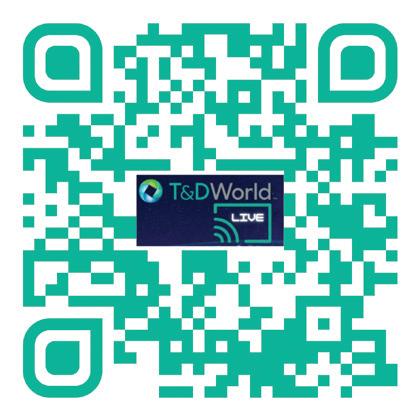


This year’s T&D World Live Conference and Exhibition kicked off early Tuesday morning with a panel energy’s policy impacts customers — an “energizing” way to start the day. I always appreciate these conversations at utility conferences. The professionals who tackle policy issues tend to do so with a level of tact and thoughtfulness that’s refreshing. In other words: utility panels are not social media.
This industry is filled with people tackling some different challenges and some of the same challenges: regional constraints, regulatory pressures, and varying stages on the path toward sustainability, resiliency, and security. Yet time and again, I see them come together to share ideas, learn from one another, and push the industry forward. I always leave these events optimistic about where we’re headed, because electric utilities, regulators, engineers, and technology providers alike continue to prove they’re among the most innovative, capable, and forward-thinking professionals out there.

Mike Beehler, regular contributor for T&D World and national spokesperson for Power Delivery Intelligence Initiative, lead the opening session on policy, asking some pointed questions of Larry Bekkedahl of Portland General Electric; Robert Kondziolka, chair of CAISO Western Energy Markets; and Brian Cole, VP of Resource Management with Arizona Public Service, the host utility.
One of Kondziolka’s remarks reflected the consensus of the panel: “One thing we can say for certain is that we do not have certainty.” He pointed out that NERC’s most recent Reliabilities Risk Report added a new risk priority: “volatile” energy policy.
APS’ Cole brought a refreshing perspective, discussing how his utility leverages that energy policy pendulum to ensure a diversity of generation to meet the increasing demand. “The policy matters a lot in your decisions that you’re making in the very short term,” he said. “But we have to think about it for a longer perspective. In one policy administration we brought on and have contracted for 10,000 plus MW of … mostly solar, wind, and battery. The good thing is we took advantage of policy that existed in that timeframe. Now the pendulum has swung, and it actually works out pretty well because I need to balance my resources out.” Now APS is looking at keeping coal for a bit and using natural gas as that bridge to cleaner energy. And of course, APS has nuclear and as many utilities are, considering what that looks like in the future.
Bekkedahl shared a personal perspective, noting that energy policies have shaped his own career — from Montana Power’s restructuring in the 1990s to the deployment of phasor measurement units (PMUs) and battery storage under the Ameri-
can Recovery and Reinvestment Act (ARRA). “We found out there were 14 different ancillary services we could do with a battery,” he said, illustrating how policy shifts often open new technical possibilities.
Bekkedahl emphasized that utilities face major policy changes every few years while still needing to operate reliably every day. “We’re trying to operate a grid every day, thinking about what’s the best way to use the tools that we have to keep it as efficient and affordable as possible,” he said. He added that decisionmaking around policy can be highly political, and that regulators must navigate information from multiple sources — utilities, universities, national labs, and the Department of Energy — to craft effective frameworks.
The conversations around policy impacts and customers continued throughout the conference, Tony Tewelis, APS’s senior vice president of transmission and distribution, opened the second day’s first general sessions by outlining utilities’ top five challenges: load growth, data centers, strategic transmission, wildfire mitigation, supply chain, and customer affordability. As far as customers go, Tewelis said that APS has shifted its internal focus from financial performance to customer experience — viewing reliability, resilience, and affordability through the customer’s eyes.
Managing Editor Jeff Postelwait and I had the privilege of chairing a few of the breakout sessions; they were all very much utility-led this year, following our “for utilities, by utilities” philosophy. Georgia Power’s Roger Ely presented a fascinating case study on continuous thermal monitoring of substations, complete with powerful thermal imaging and analytics. (Keep an eye out—he’s preparing an article for T&D World soon.) Another session featured Duke Energy’s Andrew Adidoost discussed the utility’s OT cybersecurity program. Cybersecurity remains a sensitive topic for many utilities, but Adidoost demonstrated how open conversations about operational resilience can benefit the entire sector.
Next year, T&D World Live heads to Orlando, the week before Labor Day—a great time to connect with Southeast utilities and, perhaps, tack on a bit of vacation time. The call for speakers will open in January, and as always, we’re especially interested in hearing utility-led stories and practical, experience-based insights. If there’s one takeaway from this year, it’s that the industry isn’t just reacting to change any longer—it’s leading it. The themes of resilience, security, and affordability are no longer just discussion points; they’re the pillars guiding how utilities plan, operate, and serve their customers. And as this year’s T&D World Live made clear, the path forward will be built the same way this event is—collaboratively, by utilities, for utilities.
When you hear something like the ultimate energy management strategy, what pops into your mind? I’ll bet it’s not Formula E racing! For anyone not familiar with the term Formula E racing, it’s like Formula 1 auto-racing, but using electric vehicles (EVs). It started back in 2014 and now we have just finished season 11. Let me explain why I said Formula E racing is important when it comes to energy management. Would it be surprising to learn that the race cars started the race with nearly 50% of the on-board energy they needed to finish the race?

That’s why I said Formula E racing makes me think of energy management strategies. It’s an amazing venue for showing how leading-edge technology gets these e-race cars across the finish line. Using advanced technologies to develop strategies and make e-racers run more efficiently seems like a logical progression. Plus, what happens on the racetrack finds its way
ter overall durability, and increasing resiliency. Most importantly, it was designed to operate with the new 600kW (kilowatt) all-wheel drive (AWD) regeneration braking package. This package reclaims nearly 50% of the energy needed for the Gen3 Evo to finish the race. In addition, this season there is a groundbreaking ultra-fast charging system to contend with.
This high-tech innovation provides a 10% energy boost and there’s a new mid-race 30 second pitstop required for it to be used. Holding all of this together is the state-of-the-art software that’s integrated with AI (artificial intelligence). That’s where the energy management strategies are fine-tuned. These AI algorithms are taking advantage of real-time telemetry data linked with real-world conditions surrounding the e-race car. They’re also linked to related databases such as weather, track conditions, etc.
By analyzing all of this big-data, the AI-driven technology predicts power demand, identifies inefficiencies, and optimizes energy use throughout the race. Hmm, that sounds a lot like what the power grid’s energy management systems are doing. Of course some would say a key element in the grid’s energy strategy is coordinating renewable energy, but how different is that from the e-racer’s regenerative braking system?

to the streets if it’s successful. We can’t forget that the racetrack is the toughest test site available, and what is successful moves into many areas, even the power grid!
This past season saw the Gen3 Evo e-racer set many records and prove some amazing concepts. So how does an e-racer finish a race when it starts out with less than 50% of the power needed to run the race? And why is it important? The season ended on a positive note. The innovative technologies introduced this season worked. The lessons learned will improve global EV sales and that’s good for consumers and the power grid. Let’s look specifically at the battery enhancements. They interact with other critical elements in the e-racer’s power system including the energy management systems, which can be applied to the performance of the power grid.
The battery advancements found in the Gen3 Evo really pushed the technological boundaries by improving energy density, bet-
Once an AI model is developed, it’s possible to tweak or revise it. The amount of work involved depends on the size of the revision and how extensive that revision is. Still, if there are enough commonalities it should speed up the process and energy management strategies have one thing in common. It’s all about keeping energy available 100% of the time, which is challenging for our power delivery system.
As we have discussed previously, energy demand is growing and expected to increase by about 50% by 2050. We’ve also talked about the aging infrastructure and the ASCE 2025 U.S. infrastructure report card. ASCE dropped the energy sector to a grade of D+, which represents an infrastructure that’s below standard. It’s a condition of serious concern with a strong risk of failure according to ASCE. And that was before the recent announcements from the federal government that they were terminating funding and permits for approved renewable energy and transmission projects.
Moving the energy sector into ASCE’s C category is going to require major infrastructure investments across the board. It’s also going to take a great deal of time and effort. In the interim, however, grid enhancing technologies are going to have to pick up the slack. AI-driven energy management strategies will help pick up the slack. This is a complicated issue that’s not going away, and our traditional approaches need help!














































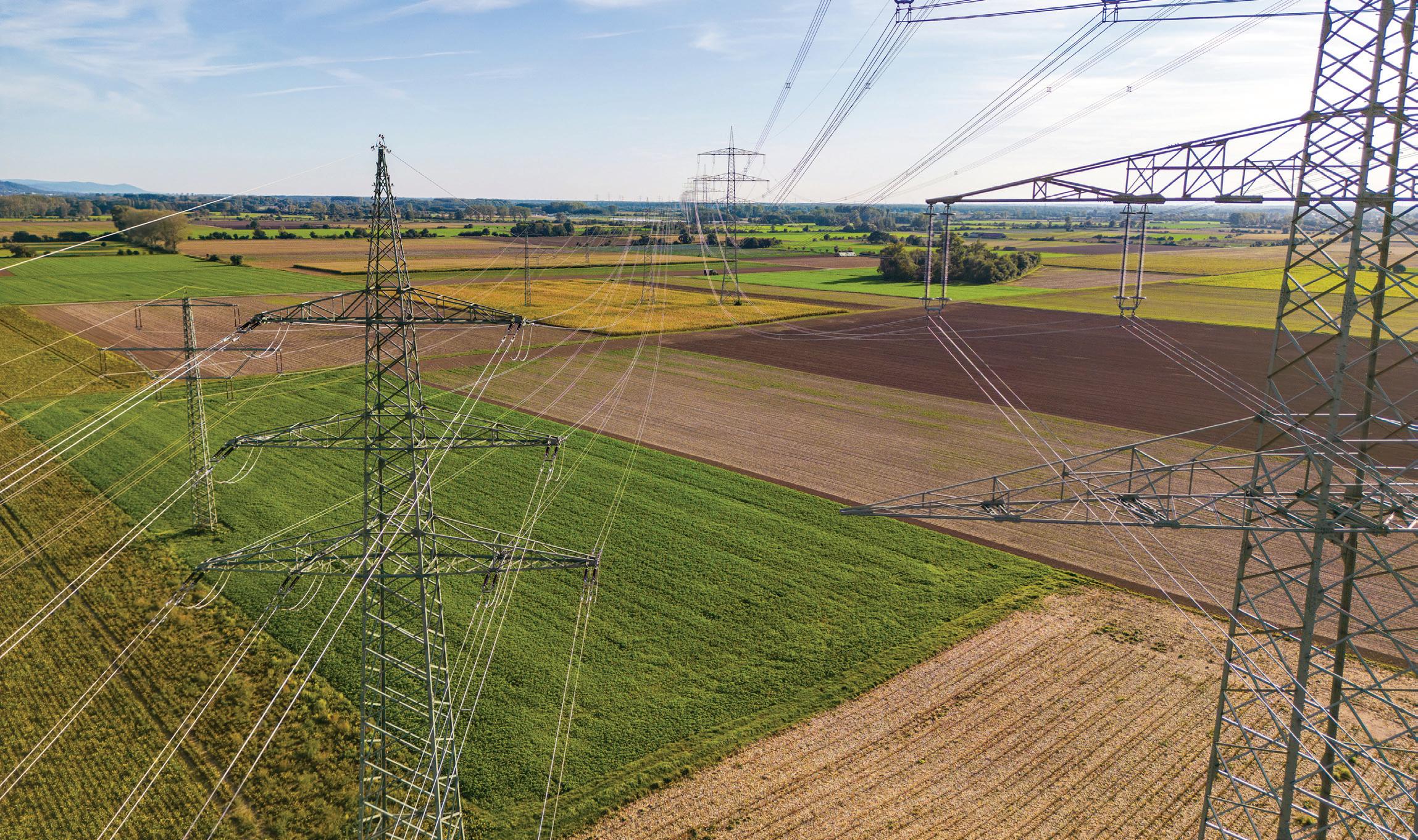
Can technology bridge the gap between the challenge and the solution?
Ever get the impression we’re playing whack-a-mole when it comes to addressing the challenges facing the power delivery systems? The list of examples can fill a book, but it’s sufficient to say no sooner than we address one issue than a couple more pop up. Interestingly, there are some innovative and unique technologies available that are pretty darn effective when it comes to adapting to changes and challenges. Consider the VSC-HVDC (voltage source converter high-voltage direct current) branch of the HVDC-based transmission family. When it comes to transmission capacity issues, a VSC-based HVDC transmission line can transport roughly twice the power capacity at half the transmission line losses of the same voltage HVAC transmission line. In addition, VSC-HVDC transmission technology offers greater flexibility and control. It is truly an innovative technology that is making strides and gaining headway when it comes to the grid’s challenges, but there is more.
Combining the VSC-HVDC with artificial intelligence is scaling up the transmission infrastructure with additional capabilities needed for grid modernization. AI adds a dimension to VSC-HVDC transmission technology that improves the optimization of control systems as it increases the system’s power flow for bet-
ter performance. Overall AI is driving power grid innovation, which has been recognized by utilities, grid operators, and transmission developers worldwide.
According to Markets and Markets, the global HVDC transmission market was estimated at over US$14 billion in 2024. It’s expected to reach about US$15.6 billion in 2025 and increase to over US$22 billion by 2030. That’s an expanding CAGR of 7.2% from 2025 to 2030. They went on to say the major factors driving the market are, “integrating VSC technology into HVDC systems, rapid transition toward renewable energy, and grid modernization to improve power reliability.”
The report went on to say, “Market expansion is primarily supported by increased adoption of VSC-based HVDC systems, which are compatible with renewable energy integration.” They added, “AI and GenAI are reshaping the HVDC transmission ecosystem by introducing advanced system monitoring, control, and resilience capabilities.” AI’s accelerating technological evolution makes it a process that can’t be ignored.
Last month “Charging Ahead” explored how utilities were adapting and adopting AI’s growing capabilities in the article titled, “Tapping Into the AI
Electric Utility.” AI’s beneficial effect on the challenges facing the aging transmission infrastructure were only mentioned slightly. Let’s look deeper into the AI utility and explore enhancing AI-driven VSC-based HVDC technology. More specifically, it is the VSC-HVDC meshed networks that are of interest. For those unfamiliar with meshed networks, they are interconnected systems of multiple VSC-HVDC transmission lines in a gridlike or intertwined configuration.
The application of VSC-HVDC meshed networks is limited today, but several multi-terminal projects are in operation or in the construction stages. Granted multi-terminals are not fully meshed networks, but they’re laying the groundwork for future meshed grids. It is a slow process, but integrating AI into the VSC-HVDC technology is helping development. It has paid off with advancing features like adaptive controllers, fast fault detection, and multifunctional protection schemes.
These innovations are necessary as the VSC-HVDC technology matures. These features are also the precursors of where this technology is going. Maybe a better approach would be considering these AI-driven functions as the building
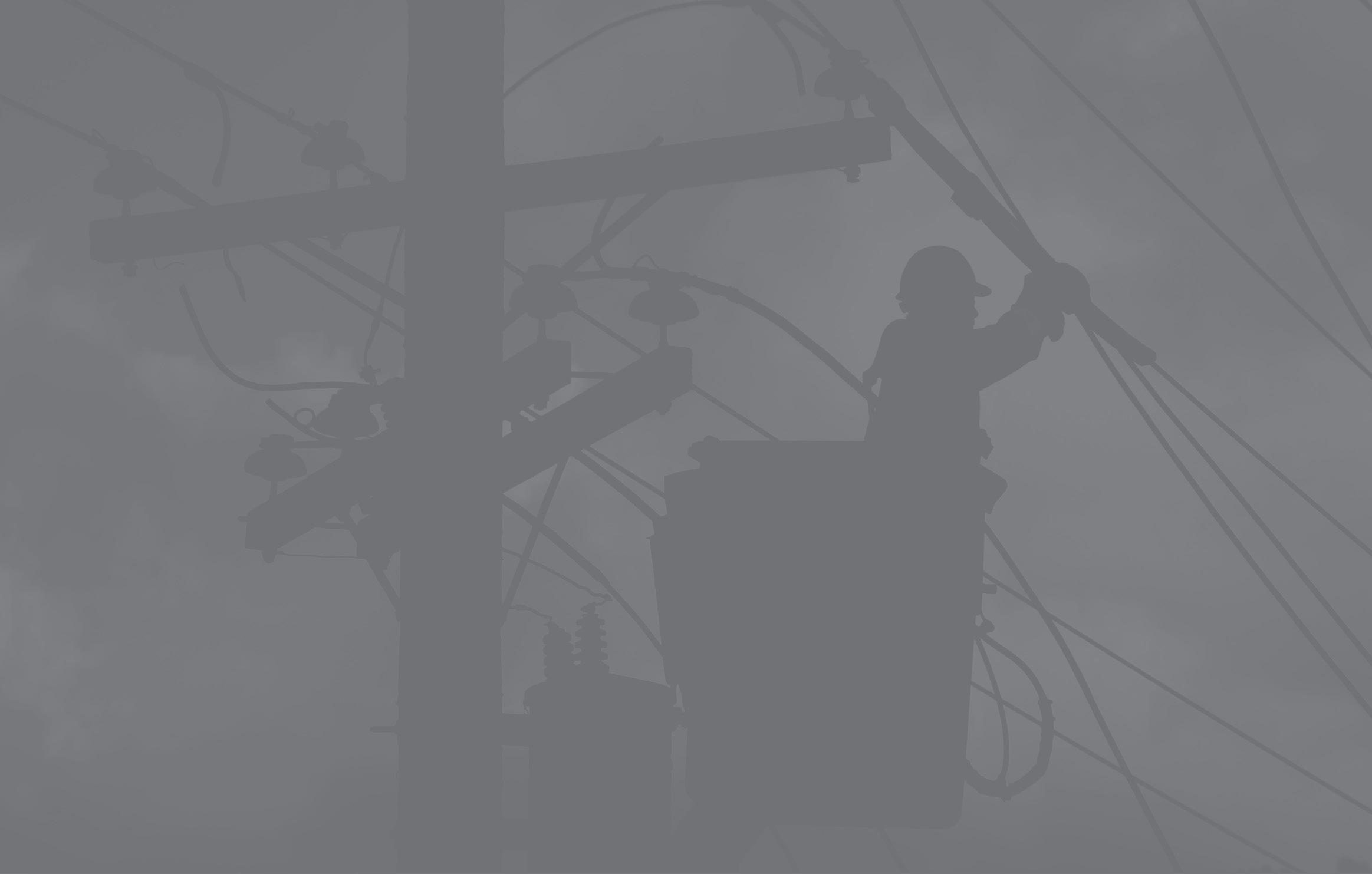
blocks necessary for unlocking the grid’s potential. It’s part of the progression for moving multi-terminal systems toward having functional meshed networks. It’s the bridging of the gap between existing VSC-HVDC facilities and tomorrow’s meshed grids.
Have you heard of agentic AI? It’s being described as the new kid on the block by the AI community. It’s a form of AI that may possibly be the key to meshed grids. It can plan, perform tasks, and adapt to changing conditions. It can also act independently complete specific tasks, making decisions and taking actions. Have you heard about the CI/CD pipeline? That’s the process of continuous integration, continuous delivery, and continuous deployment used to automate software development. It’s another of the frameworks being utilized by full stack developers for accelerating AI progress.
“Charging Ahead” contacted Dacian Messthaler, software architect, head of
Engineering Platform, and Jens Dietrich, teamlead control level, C&P platform at Siemens Energy to get their input on what to expect as the grid is hybridized into an AI-driven dynamic power grid.
“AI and their specialized systems are the reasonable place to start and for HVDC the control system has been the focus for many years,” said Dietrich “How do you bring GenAI into this scheme? The first step is the development of the foundation, which is known as an engineering platform. The platform provides the environment for these elements to interact and work together — including processes, workflows, and best-practices. It began as a move from project-specific engineering to a standardized, reusable technological backbone, driven by the need to scale engineering processes amid rapidly increasing project intake.”
Dietrich explained, “This approach is much like today’s digital twin modeling. It allows teams to simulate and test HVDC systems virtually. It brings early customer engagement into the design process rath-
er than later. It happens when designs can be improved by timely customer interaction. It becomes an iterative design process before physical implementation, which helps clarify requirements and reduces late-stage changes. It also makes the manufacturer and customer partners in the project’s progression.”
Messthaler said, “Standardization is the key element to this happening. It’s essential for scaling of Siemens Energy’s engineering efforts as HVDC applications become the preferred transmission option as the number of projects and complexity grows significantly. Interoperability and standardization provide a compatibility necessary in this streamline effort relying on the integration of AI technology. It provides a common set of guidelines needed for the development and operation of AI-driven HVDC schemes, which have the potential for more advanced automation across engineering workflows.”
Messthaler continued, “What we’re discussing is still in the developmental








stages, but every day more building blocks of this process are becoming available. It’s a future goal for project workflow where a new HVDC project can be initiated through the engineering platform. It requires minimal input — mainly based on systemic requirements and parameters, by taking advantage of applications like digital twins, automated CI/CD pipelines, and AI-driven project setup. When functional its objective is the acceleration of project delivery with enhanced customer collaboration. This is not an environment where agentic AI would replace the human technical staff. On the contrary, this agentic AI-driven platform requires constant human guidance. Think of it as a Human-AI collaboration augmenting the technical staff by utilizing the AI-driven platform to handle repetitive tasks and enabling the technical staff to focus on higher-level design, negotiation, and problem-solving.”
Messthaler and Dietrich summarized the purpose of Siemens Energy’s effort on developing a standardized engineering platform for HVDC projects using
advanced AI technologies: to provide the human technical staff the tools for increased reusability, predictability, and efficiency in engineering processes. The concept of agentic AI platforms is being explored. It represents the integration of already existing modular standard elements and workflow specifications with a more advanced automation intelligence.
The traditional point-to-point HVDC transmission has been very good when it comes to moving gigawatts across the power grid, but technology moves onward faster and faster. Multi-terminal meshed networks are the future. They’re more resilient because power can be rerouted when congestion or faults would cause impediment of the flow of power. Cuttingedge technologies are adapting the power grid to bridge the gap between challenges and solutions. Agentic AI-driven and other frameworks are pushing the boundaries of VSC-HVDC, and that’s expanding the grid’s limitations.
Like other topics that we’ve explored, evolving AI capabilities are very promising, but they need human interaction to get the most out of the process. Interestingly, rather than taking way human jobs, it’s making humans more indispensable. Take agentic AI, it acts autonomously. It achieves specific objectives, and it can independently solve complicated problems, but those are really repetitive tasks. It takes a skilled human technical-staff to bring these groundbreaking technologies to life.
They ensure the AI-driven applications can adjust to the power grid’s dynamic operating conditions. Innovation is indispensable with technologies, but technology doesn’t go anywhere without talented people applying it correctly to the issues. It is this versatility that enables the power delivery system to continue to get smarter with exceptional flexibility to adapt to changing realworld conditions. AI applications may be uncomfortable, but they’re exciting too!
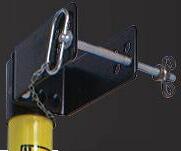


















The U.S. Department of Energy (DOE) has introduced the Speed to Power initiative, aimed at expediting the development of large-scale grid infrastructure projects for both transmission and generation. The program is intended to help meet rising energy demand while supporting the growth of artificial intelligence (AI) and data centers.
According to DOE analysis, the current pace of project development is not sufficient to address the country’s expanding manufacturing activity and broader economic needs. The agency plans to work with stakeholders to identify projects that can move forward quickly while addressing challenges associated with grid expansion.
“Americans will require more energy to power their homes and businesses in the coming years,” said Energy Secretary Chris Wright. “With the Speed to Power initiative, we’re leveraging private sector expertise to harness all forms of energy that are affordable, reliable, and secure.”
As part of the launch, DOE is issuing a Request for Information (RFI) seeking input on large-scale transmission and generation projects. The agency is asking for feedback on near-term investment opportunities, project readiness, expected load growth, and infrastructure constraints. The goal is to determine

how DOE funding programs and authorities can be applied to accelerate grid capacity expansion.
The initiative builds on DOE’s prior work to assess grid reliability and security. In a recent report, the department noted that the risk of blackouts could increase significantly by 2030 without the addition of new firm power capacity. The Speed to Power effort is designed to help address these reliability concerns and guide federal, state, and industry stakeholders in meeting future energy demand. —T&D World Staff
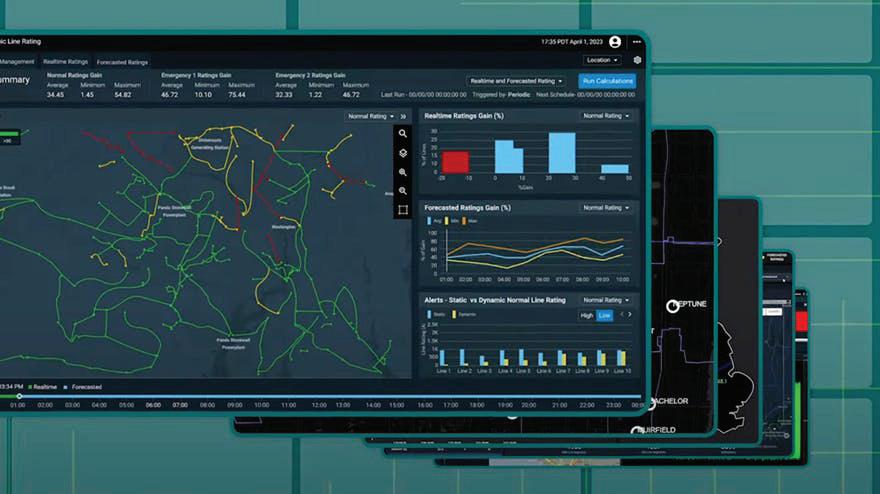
The leaders of GE Vernova Inc. have agreed to sell a part of its software portfolio that focuses on manufacturing operations to a big name in the global investment space for $600 million.
The deal between GE Vernova and TPG calls for the purchase of Proficy to be completed in the first half of next year. Proficy markets a range of software offerings to more than 20,000 customers around the world in manufacturing as well as transit and infrastructure. The business has revenues of nearly $200 million and accounts for about 20% of GE Vernova’s broader electrification software sales.
Speaking at Morgan Stanley’s 13th Annual Laguna Conference after the transaction was announced on Sept.
11, President and CEO Scott Strazik said the planned Proficy sale to TPG—which manages roughly $270 billion via various platforms—is about focusing GE Vernova’s software work on energy-related applications.
“When I would go on a customer visit, it was to go meet Procter & Gamble, [which] leverages that solution in all their factories,” Strazik said. “Procter & Gamble is a great customer but that’s not our core business.”
Strazik connected the Proficy deal to his team’s acquisition this summer of French firm Alteia SAS, which specializes in visual data and artificial intelligence tools, particularly in support of utility grid operations. Continuing to build out GE Vernova’s GridOS portfolio, Strazik told the Laguna conference, is “a critical part of our future” even if the dollar figures aren’t yet very important to the company as a whole.

But the opportunity is large, the CEO said.
“We’re nurturing this business. We’re focusing it,” Strazik said. —Geert De Lombaerde
Avangrid, an energy company and member of the Iberdrola Group, has announced Iberdrola’s plan to invest $18.5 billion in the U.S. by 2028, with the majority of investment directed toward grid and gas infrastructure.
The investment plan supports Avangrid’s ongoing commitment to invest, rebuild and strengthen grid and gas infrastructure across its New York and New England utility companies, which serve more than 3.4 million customers.
“With our commitment to invest $18.5 billion in the U.S. energy sector, Avangrid is focused on building and strengthening the infrastructure that unlocks innovation, drives economic growth, and secures the nation’s energy future,” said Avangrid CEO, Jose Antonio Miranda.
“Avangrid’s $18.5 billion investment plan ensures the grid will support growing energy demand today, make it more resilient and accelerate economic competitiveness into the future.”
The capital investment plan will strengthen Avangrid’s role in energy by focusing on rebuilding and replacing aging infrastructure in electric and gas utilities, expanding capacity for Data Centers and large development projects, avoid increasing storm restoration costs, and provide more energy production for customers in states like New York, Maine and Connecticut. The investments will also harden grid infrastructure to increase resiliency against severe storms and lessen outages.
—T&D World Staff
The three investor-owned electric utilities active in California— Edison International Inc., PG&E Corp. and Sempra—will in 2029 start to pay a combined $300 million per year into a new wildfire insurance fund, per a bill passed late last week by Golden State legislators.
The new fund, which will cover claims from fires that start after the bill’s passage, builds on an existing $21 billion pool that many experts fear will be depleted by claims from January’s devastating Los Angeles-area fires. The new fund will grow to $18 billion, be split evenly between the three companies and their customers, and run through 2045. (Ratepayers will pay an aggregate of $900 million per year starting in 2036.)
The utilities’ total contribution from 2029 until 2045 will total $5.1 billion. The fund administrator also has the option to call on them to pay another $3.9 billion if needed. Both Edison International, the parent of Southern California Edison, and Pacific Gas & Electric owner PG&E will pay $145 million annually while Sempra, which owns San Diego Gas & Electric, will pitch in $10 million per year.
In a note to investors, Edison International executives said the passage of the new fund “is a key action that demonstrates support for [investor-owned utilities’] financial stability and its importance for customer affordability.” They also pointed to the new fund’s feature that its liability cap is based on the year of ignition.
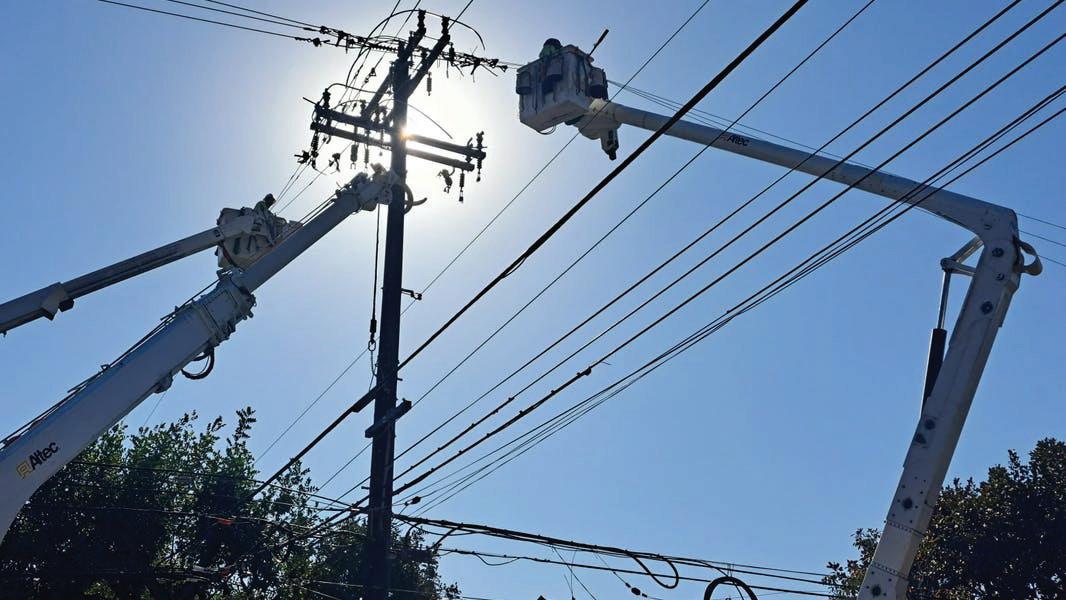
The new fund gives the publicly traded utilities something Edison President and CEO Pedro Pizarro and Patti Poppe, his PG&E counterpart, said last month they wanted: Their shareholders will not be called on to pay large sums into the fund up front.
Carol Levenson, director of research at GimmeCredit, said the new insurance fund reduces the financial risks to the three utilities “in important ways” and “in a financially manageable fashion” and said it is likely to be positive for Edison’s credit profile. The only negative, she added in a Sept. 15 note, is that Edison’s contribution has been raised to the same level as PG&E’s. The latter had borne a far larger share of the existing $21 billion fund, which was created a year after the 2018 Camp Fire. —Geert De Lombaerde
In Southern California, a partnership between Citizens Energy and SDG&E shows how transmission projects can deliver both clean power and lasting social benefits.
By Kazeem Omidiji, San Diego Gas & Electric, and Joe Kennedy III, Citizens Energy Corp.
As North America’s electric grid evolves to support greater renewable energy integration, electrification, and resilience, utilities and developers are increasingly embracing collaborative approaches to infrastructure development.
New models that align transmission investments with local priorities are helping to create stronger, more affordable, and more resilient communities.
Two standout projects in Southern California — the Sunrise Powerlink and the
Sycamore-Peñasquitos Transmission Line — demonstrate how a partnership between San Diego Gas & Electric (SDG&E) and Citizens Energy Corporation has not only strengthened the grid but also delivered meaningful, long-term benefits to the communities hosting these critical assets.
A New Model: Community Collaboration Through Investment Citizens Energy Corporation, founded by former Congressman Joseph P. Kennedy II, operates on a mission to turn profits
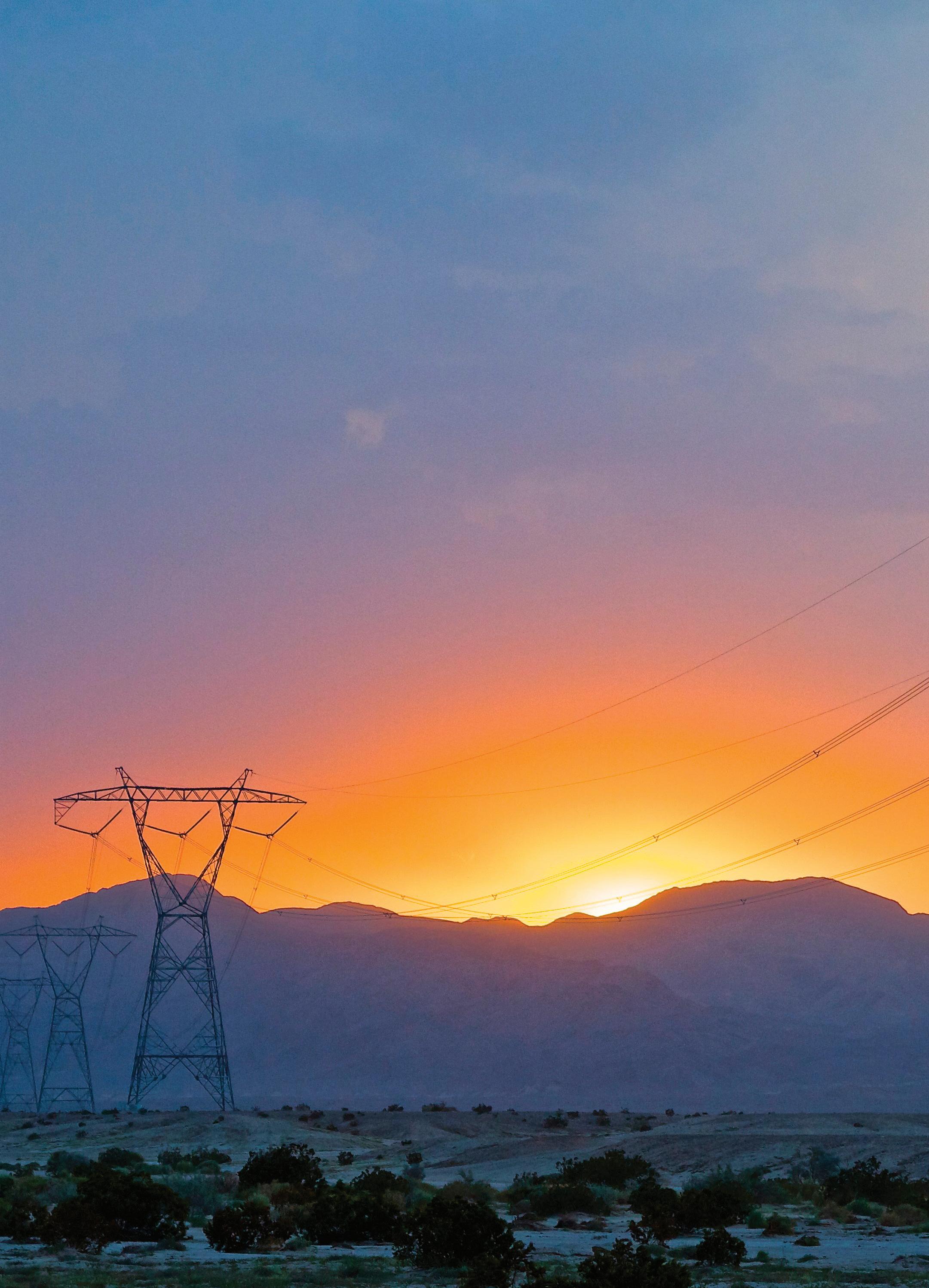
from energy-infrastructure investments into programs that assist low-income and underserved populations. Through a unique investment model, Citizens Energy partners with utilities like SDG&E to finance a portion of a transmission project and earns the same returns on that investment as its utility partner.
Citizens then uses at least 50% of its profits from the transmission investment to fund community-focused initiatives that align with local priorities. This partnership model allows Citizens Energy

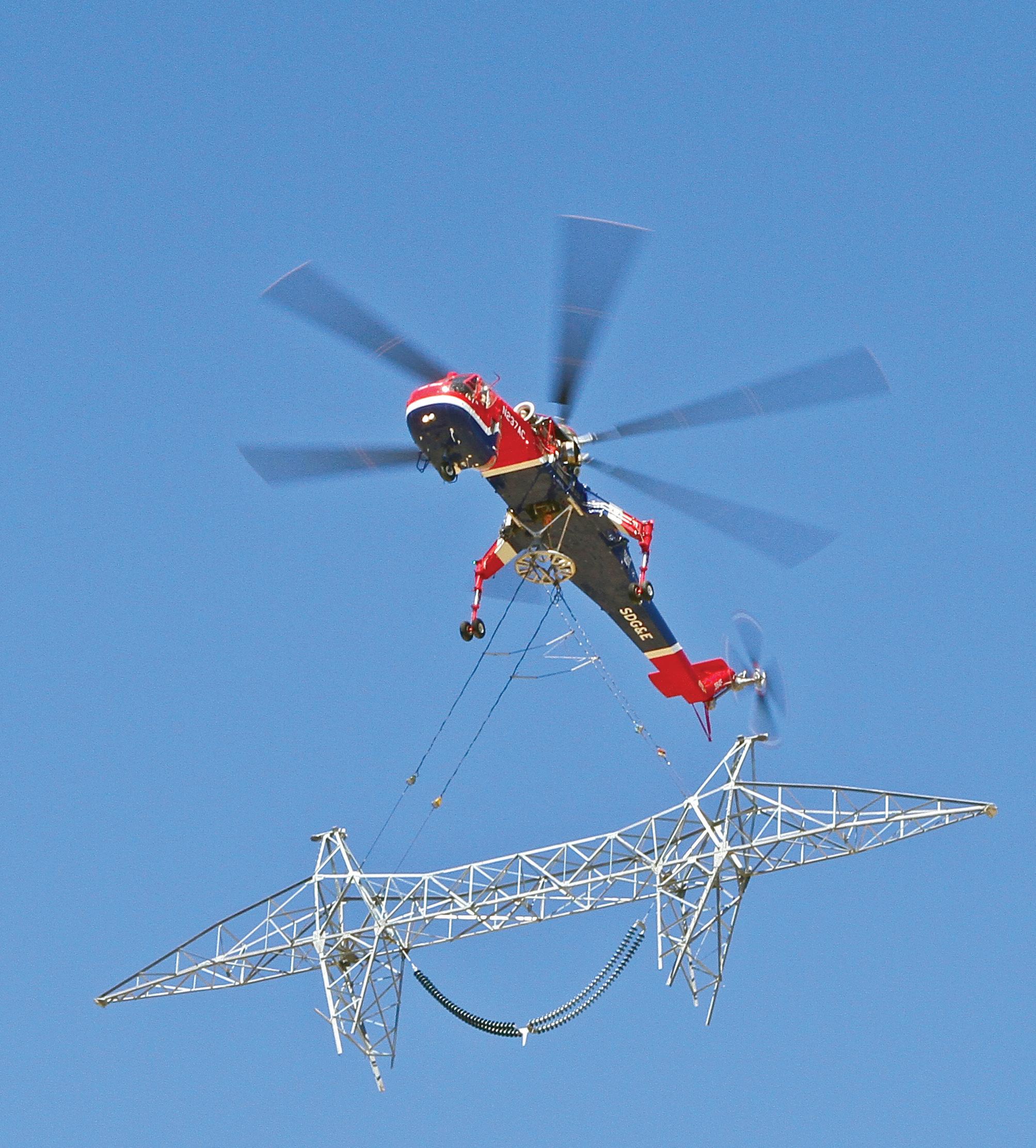
to not only support grid resilience and clean energy but also meet critical social needs by reinvesting profits back into local communities.
Rather than positioning infrastructure development as a challenge to overcome, Citizens’ model views it as an opportunity to build deeper collaboration
— strengthening trust, resilience, and affordability for the communities that host critical grid infrastructure. This partnership model sets a new precedent for energy development, where economic and social goals are not mutually exclusive but instead serve to enhance one another.
Completed in 2012, the Sunrise Powerlink is a 500-kV transmission line spanning 117 miles from Imperial County to the San Diego region. The project was designed to deliver clean energy from solar and wind farms in the Imperial Valley to population centers in the San Diego area, significantly improving the region’s access to renewable energy.
Citizens Energy funded 50% of the project’s cost in the Imperial Valley, which enabled the reinvestment of its profits into Imperial County, one of the most economically disadvantaged counties in California. Working with SDG&E and the local municipal utility, the Imperial Irrigation District (IID), Citizens is using its profits to provide both energy affordability and access to renewable energy for thousands of low-income families. Initially, Citizens funded no-cost, rooftop, solar installations for over 650 income-qualified homeowners. Later, to provide benefit to

more households, Citizens transitioned to the development of the largest lowincome community solar project in the United States, the 39-megawatt eGreen/ Citizens-Imperial solar farm, completed in 2018. This solar project has provided vital support to the Imperial Valley community by approximately 12,000 of IID’s low-income customers saving on electricity bills every month.
Key Results of the Sunrise Powerlink & Imperial Solar Farm include:
• Delivers renewable power to over 650,000 homes in California, and enabled development of a 39 MW low-income solar farm.
• 12,000 Low-Income Households Served: Each receiving approximately $350 in annual electricitybill savings.
• Long-Term Impact: Guaranteed savings over the solar project’s 20+year life, benefiting vulnerable communities.
The Citizens Imperial Solar Farm is part of a broader effort to cost-effectively integrate renewable energy into low-income communities, a group that is often disproportionately affected by energy costs. By aligning infrastructure development with direct community benefits, Citizens Energy and SDG&E helped demonstrate how transmission projects can contribute to both clean-energy goals and local economic resilience. The duration of both the transmission investment (30 years) and the solar project’s design life (20+ years) ensures that the community continues to benefit from energy savings for decades, creating lasting economic relief for families who need it most.
Following the success of the Sunrise Powerlink, the partnership between Citizens Energy and SDG&E continued with the Sycamore-Peñasquitos Transmission Line — a 230-kV project that enhances reliability and flexibility in the San Diego area grid, especially as variable renewable resources come online.
Completed in 2019, the Sycamore-Peñasquitos project exemplifies how transmission development can deliver lasting local benefits beyond the wires themselves.
The Sycamore-Peñasquitos line not only improves grid stability in Southern California, but also supports local social and environmental initiatives. Citizens Energy has used profits from its investment in the Sycamore-Peñasquitos line

to provide over $13 million of support to organizations advancing environmental stewardship and social services critical to community resilience.
Key Highlights of the SycamorePeñasquitos Community Investments: • Electric-Vehicle Donations: Funding EVs for nonprofit organizations

















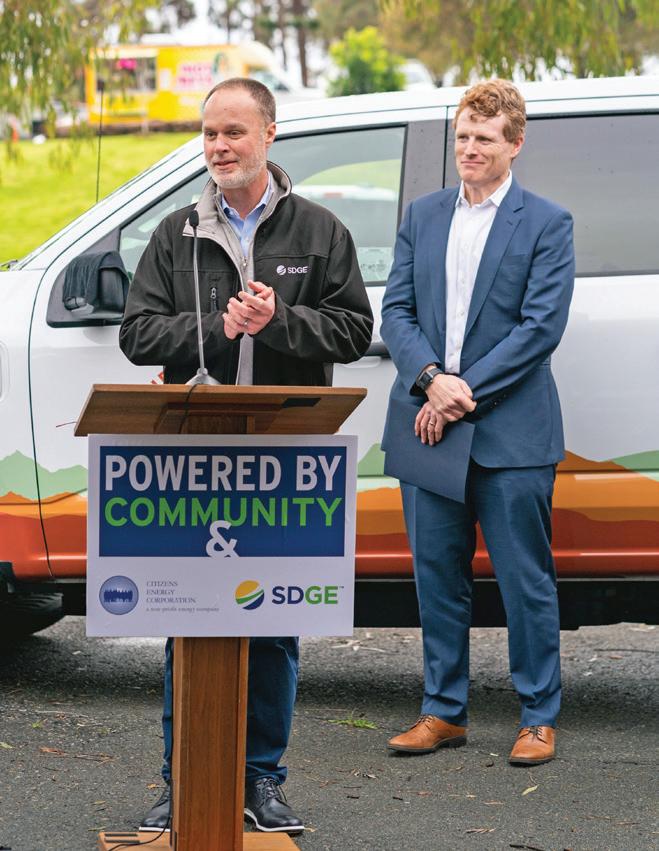
their dedication to the community in Azalea Park in Spring 2025. UPPER
RIGHT: Scott Crider (President, SDG&E) at podium and Joe Kennedy III looks on in front of one of several Ford F-150 Lightnings awarded to San Diego Canyonlands, a local nonprofit. RIGHT: Meals on Wheels staff pose in front of one of the electric vans awarded to them by Citizens Energy and San Diego Gas & Electric.

that serve low-income and traditionally marginalized communities.
• Supporting Environmental and Social Initiatives: From wildfire resilience to education and workforce development, these investments are supporting the broader community.
• Partnership for Transportation Electrification: SDG&E has partnered with these organizations through its Transportation Electrification Advisory Services (TEAS) program to build the necessary charging infrastructure for the EVs, helping to reduce emissions and increase local access to clean transportation.
Through these initiatives, Citizens Energy and SDG&E are contributing to the creation of more resilient, sustainable, and
equitable communities, ensuring that the benefits of the energy transition are widely shared and felt by all.
The transmission-investment model developed by Citizens Energy and SDG&E offers valuable lessons for future grid projects, especially as more utilities and developers look to adopt collaborative approaches that benefit both infrastructure and communities. Several key insights have emerged from these projects:
• Infrastructure and Community Resilience Go Hand-in-Hand - Transmission projects are not just about delivering power — they are about creating resilient, thriving communities. By structuring transmission
projects to deliver immediate and lasting benefits to host communities, utilities can support not only environmental stewardship but also economic development, social welfare, and energy affordability.
• Partnership Models Strengthen Project Outcomes - Minority investments by mission-driven partners like Citizens Energy allow utilities to retain operational control while aligning infrastructure improvements with broader community priorities, all without adding costs to ratepayers. This creates a win-win scenario where utilities meet gridreliability goals while supporting their surrounding communities.
• Scalable Framework for Future Growth - The Citizens model has
proven effective across both large regional projects like Sunrise Powerlink and urban-reliability enhancements like Sycamore-Peñasquitos. Its flexibility across different geographies and scales shows that this approach can be scaled to suit a variety of projects, from rural to urban settings.
In addition to its groundbreaking work with SDG&E, Citizens Energy is also pursuing an innovative partnership with Pacific Gas and Electric Company (PG&E). Under a proposed investment program submitted to the California Public Utilities Commission (CPUC), Citizens plans to invest up to $1 billion in PG&E’s highvoltage electric system upgrades, using a significant share of its after-tax profits to provide more than $450 million in direct bill-paying assistance to low- and moderate-income PG&E customers over the next 35 years.
This effort reflects a growing commitment to align transmission investment with affordability initiatives, helping to create a more resilient and inclusive energy future for communities across California. This proposed program would benefit PG&E customers by reducing energy costs for families in need, without increasing rates for other customers. It also demonstrates how utility investments can help meet both system reliability and social equity objectives, creating a stronger and more affordable energy future for all.
As the electric grid expands to meet the demands of a cleaner, more electrified economy, partnerships like the one between Citizens Energy and SDG&E show how infrastructure development can serve as a foundation for stronger, healthier, and more resilient communities.
Rather than framing transmission as a project to be “approved,” utilities and developers can view it as a collaborative
As severe weather events intensify around the world, electric power grids are increasingly tested by hurricanes, ice storms and wildfires. In the face of these challenges, more than ever before, we need to stay connected – to the electrical grid and to each other. Resilient Structures composite poles have demonstrated near perfect performance by reliably standing strong in nature’s harshest conditions. Engineered to be resilient, safe and environmentally sound they are the new standard in grid reliability.
opportunity — one that builds trust and delivers lasting benefits to local communities. By aligning infrastructure, affordability, and community resilience, Citizens Energy and SDG&E have offered a replicable model for the next generation of transmission development: one that not only connects power but also connects people to opportunity.
KAZEEM OMIDIJI, Director of Community Relations, San Diego Gas & Electric. Kazeem is responsible for SDG&E’s corporate philanthropy and relations with non-profit and community-based organizations in San Diego County and South Orange County.
JOE KENNEDY III, President, Citizens Energy Corporation. Joe is currently the President of Citizens Energy, a diversified renewable energy non-profit dedicated to making clean energy more accessible and affordable. He formerly served as the U.S. Representative for Massachusetts 4th congressional district from 2013-2021, and member of the influential House Energy & Commerce Committee where he prioritized economic opportunity for working families.
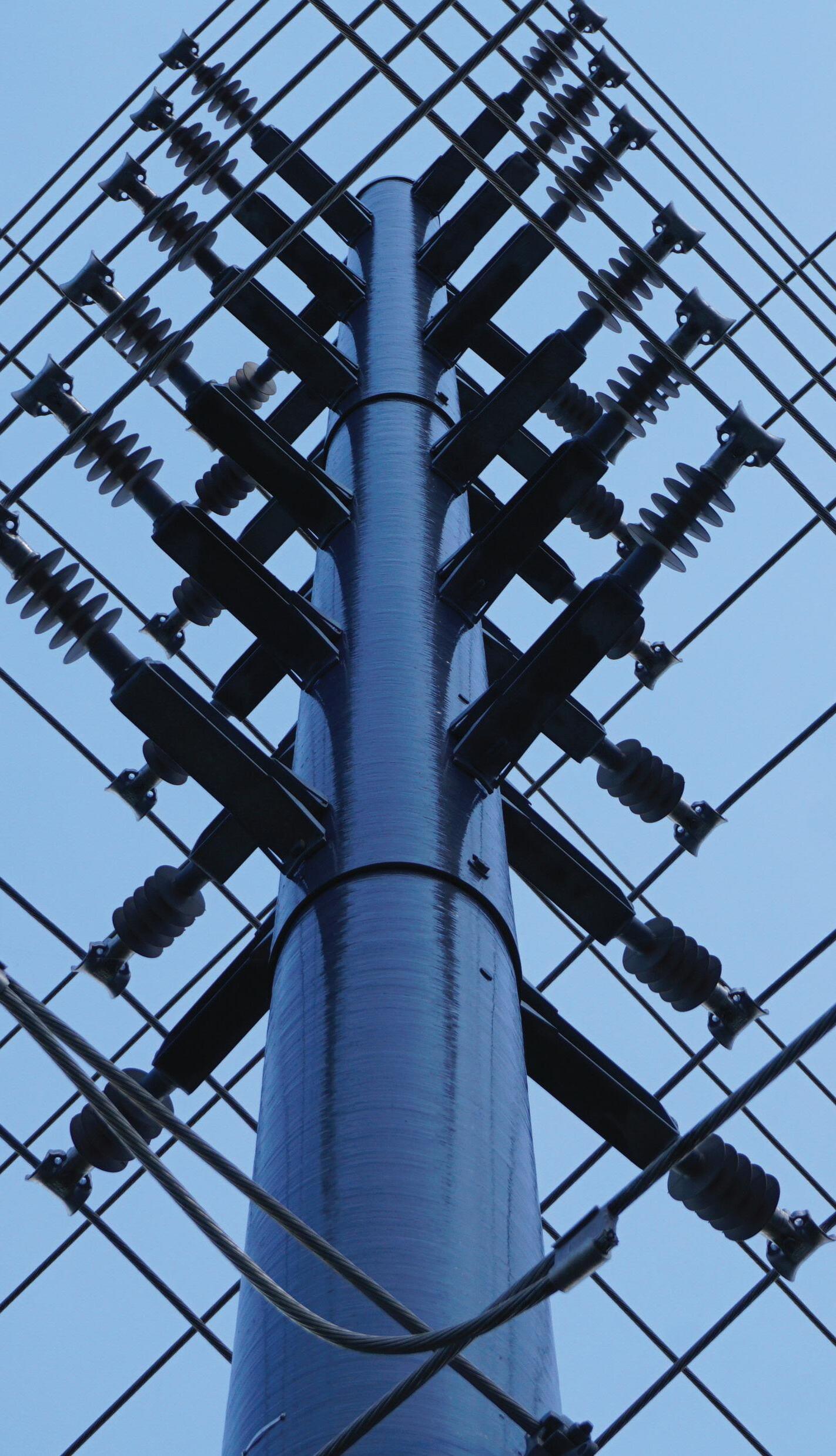

By AMY FISCHBACH, Field Editor
More than 45,000 miles of subtransmission and distribution power lines span the Ameren Illinois service territory, and about 1.3 million utility poles, including 2,000 high-strength composite poles, support this infrastructure. To boost reliability and minimize outages for customers, field crews are inspecting, upgrading, replacing and rebuilding sections of line.
“A utility can continue replacing poles in poor condition, but at some point, the conductor itself must be upgraded — either through reconductoring or a full line rebuild using modern designs,” says Randy Thoroman, director of Strategic Initiatives for Ameren Illinois. “This approach not
only strengthens both the overall line with more modern conductors and structures for improved reliability and resiliency but also enables higher capacity to support future load growth, economic development, and the state of Illinois’ Climate & Equitable Jobs Act goals, which moves Illinois to 100% carbon-free power by 2045.
Sub-transmission lines can last for 60 to 100 years, depending on loading conditions. Over time, however, weather conditions can cause the steel core of a conductor to rust and pit. This deterioration can reduce the rated tensile strength (RTS) of the steel core, leading to possible conductor failure, decreased reliability and increased safety risk.
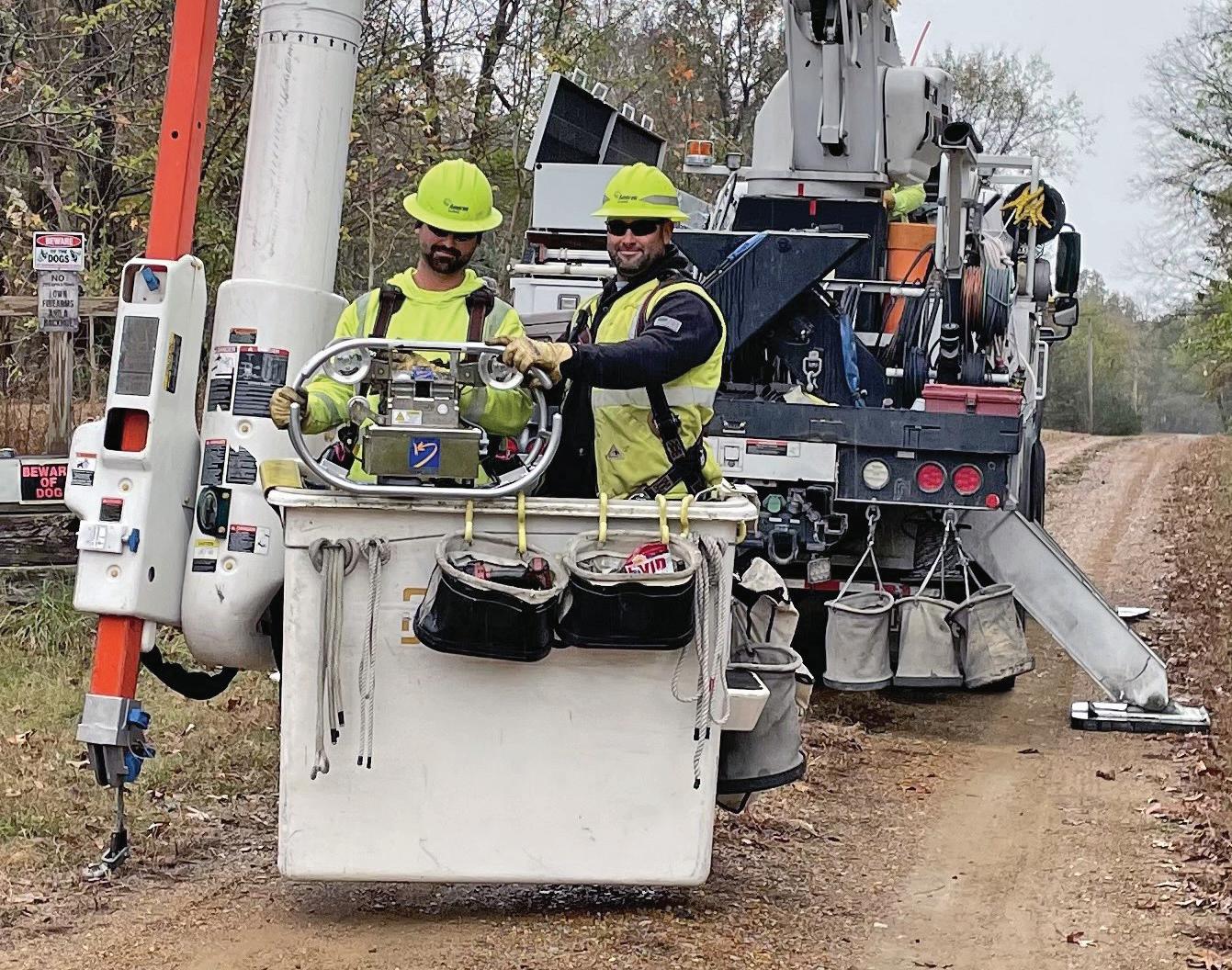

Ameren Illinois lineworkers place the LineVue robot onto subtransmission power lines, while a lineworker or engineer on the ground operates the device to inspect sub-transmission power lines.
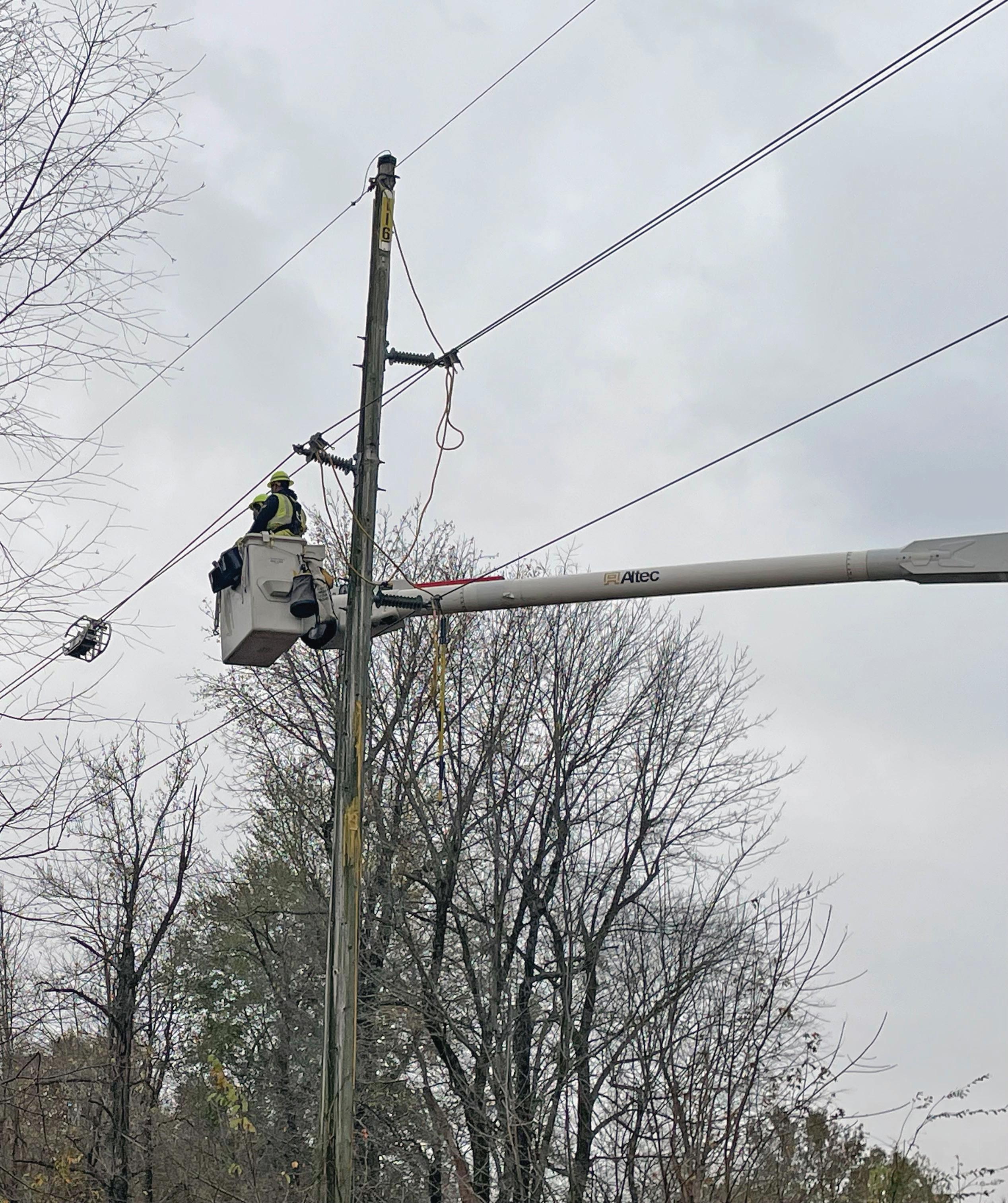
The LineVue device can perform inspections in a more accurate and cost-effective manner than previous inspection methods.
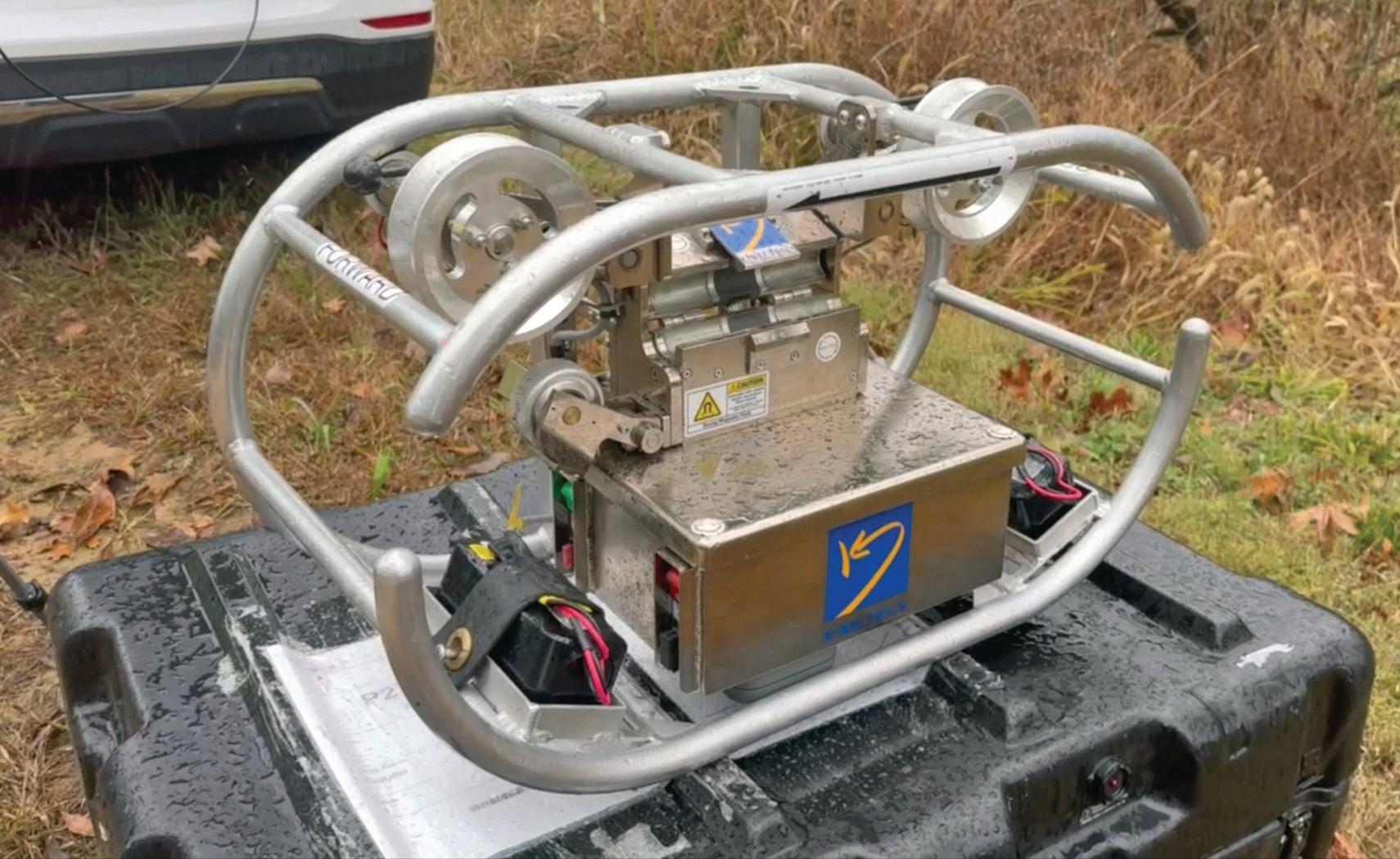
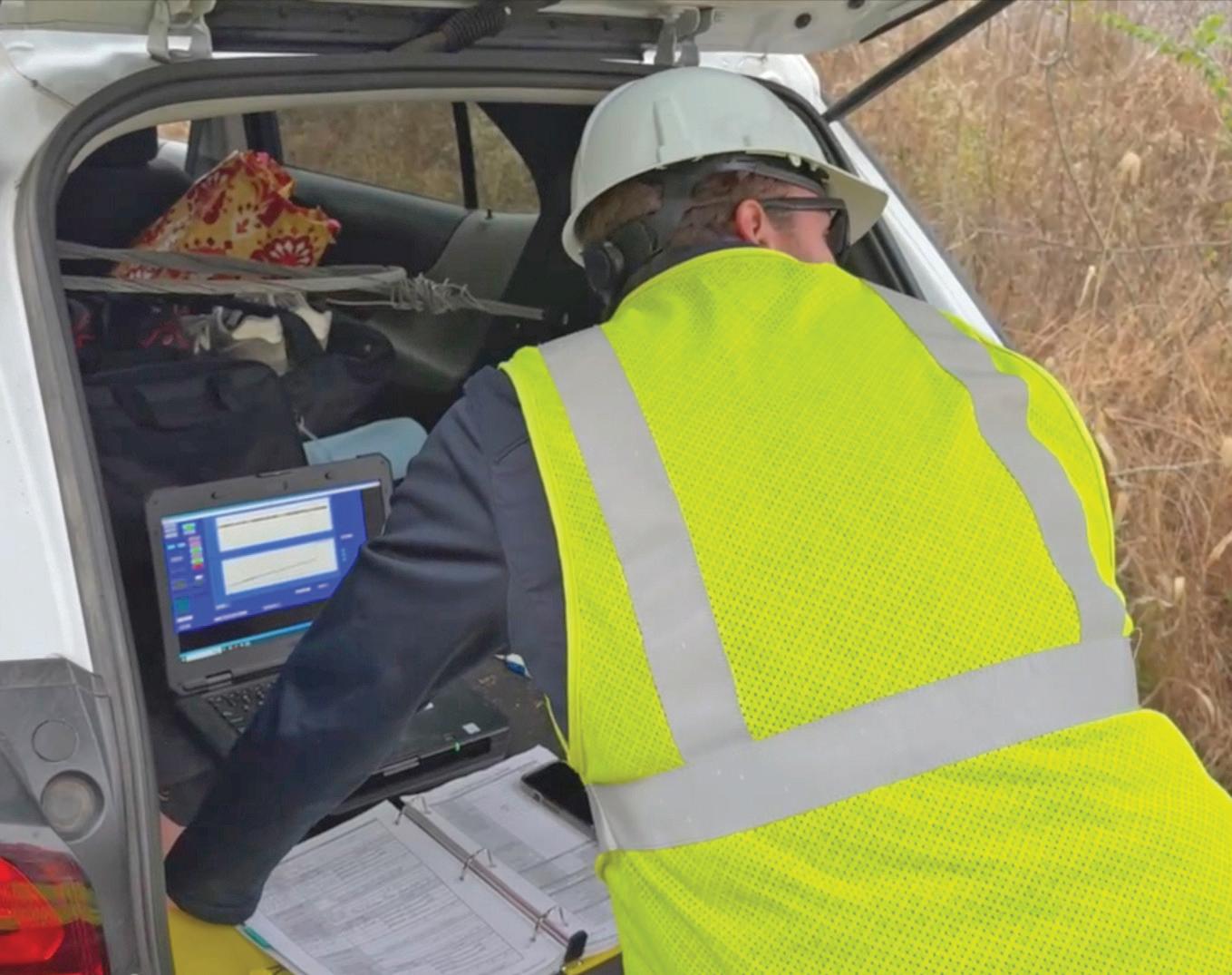
Traditionally, engineers and lineworkers have been able to determine which lines had deteriorated conductor in Ameren Illinois’ service territory. The utility, however, has 100-plus aging lines that are nearly 80 to 100 years old, leaving it with the question: how do you identify
and prioritize replacements of those lines based on the most deteriorated conductor?
Ameren’s field workforce conducts periodic inspections of poles and equipment, and this work practice continues in support of evaluations of line rebuilds. Conductors, which are considered critical
Ameren Illinois implemented a Multi-Year Integrated Grid Plan as part of its ongoing commitment to affordability, equity and cost-effectiveness. Here are the pillars of the plan and how they relate to grid planning:
• Safety and Reliability: Sustain and strengthen grid safety and reliability through continued investment in programs, systems and infrastructure that serve as the foundation for a more advanced, secure and clean grid.
• Resiliency: Mitigate, withstand and recover from grid interruptions in order to minimize the impacts of the changing climate on the grid through programs, processes and tools such as proactive equipment replacement, advanced infrastructure hardening and more intelligent, automated, flexible and
• Clean Energy Transition: Evaluate and deliver innovative advancements to the grid that facilitate the adoption and development of DERs; expand BE, enable customers to transition to electric energy for their transportation needs; promote the equitable long-term growth of renewable energy, DR and EE and further enable customer access to affordable, clean energy.
• Customer Experience: Enable greater customer engagement, empowerment and options for energy service through expanded education and programs based on customer needs, and implementing new technology to improve the customer experience, while continuing to prioritize affordability, equity and improved customer service.

“Our customers count on us to invest prudently in infrastructure to improve the performance of our energy delivery system.”
assets on the poles, were only visually inspected primarily. When data warranted, they would also perform an engineering analysis by removing a short section of subtransmission conductor and sending it to the lab for evaluation. While this method gave the utility deeper information about the conductor, it was also manually intensive, said Kyle Maxwell, superintendent of Electric Operations for Ameren Illinois.
“We found that the old method does not provide a complete view of the entire conductor span, only the short piece that is submitted to the lab,” Maxwell said. “It is hit or miss if that is the most representative section for the entire span.”
Recently, Ameren Illinois embraced a new approach to line inspection and maintenance by leasing a Kinectrics LineVue device, which provides a complete analysis of the entire conductor span.

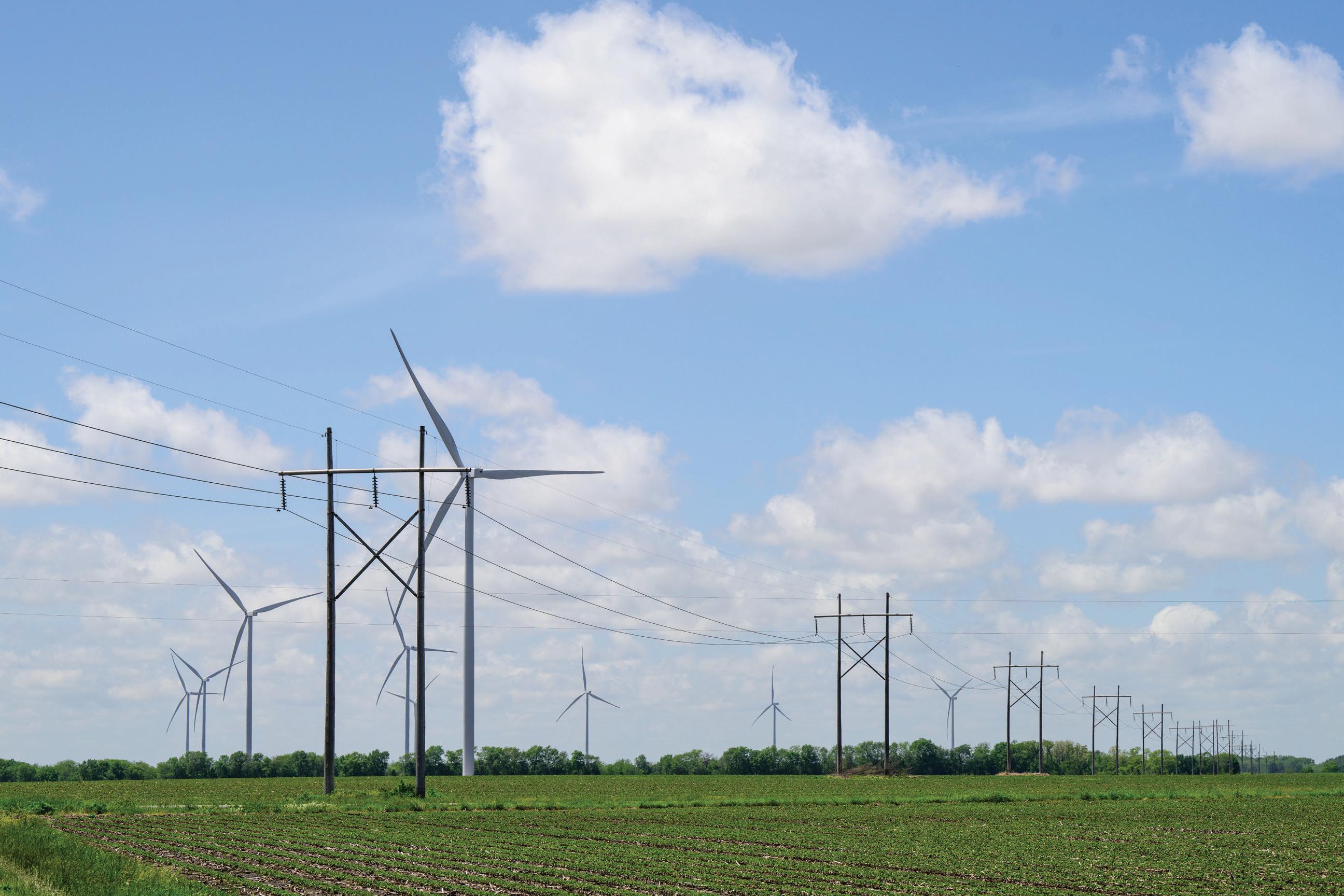

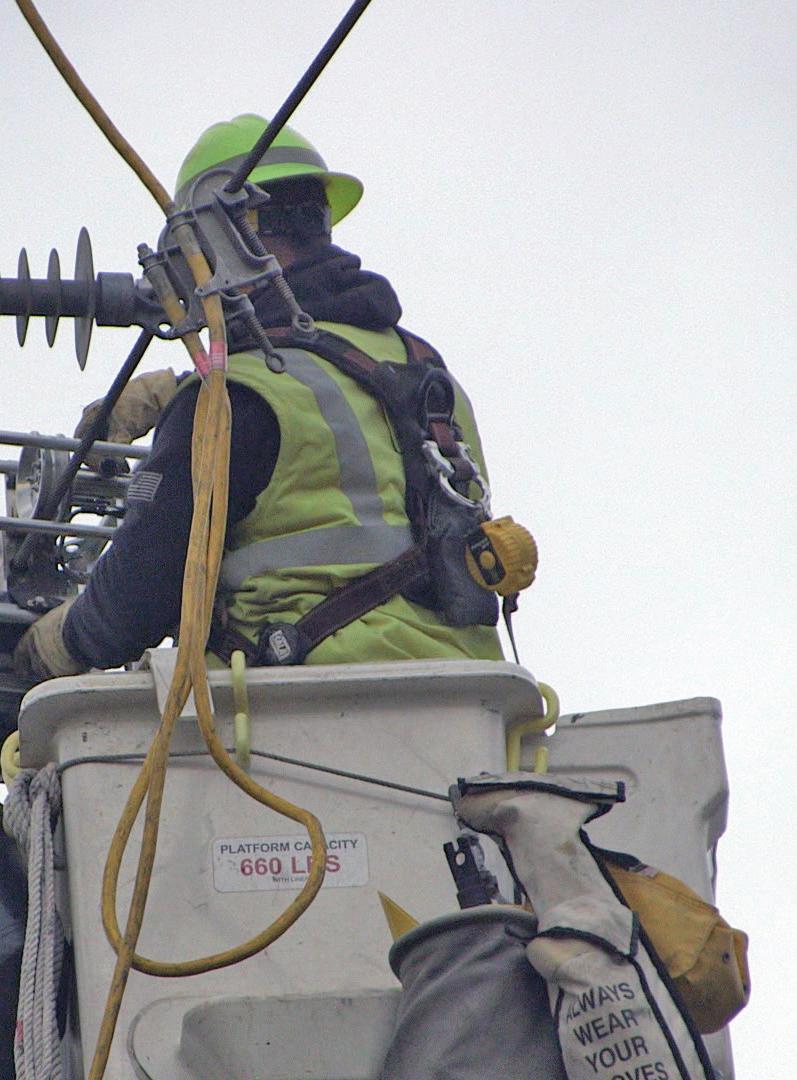
“It is a more accurate estimate of the health of the entire conductor,” said Riley Adams, senior manager of Electric Programs for Ameren Illinois. “The Kinectrics


LineVue device enables us to identify the remaining RTS of the steel core and prioritize which aged sub-transmission lines that are at end of life that need rebuild first. This approach focuses available funding to the highest priority projects.”
Using the technology, Ameren Illinois can more quickly and accurately determine when sub-transmission power lines should be upgraded. The device can assess the ACSR (aluminum conductor-steel reinforced) to identify any potential defects such as pitting, rusting and loss of steel core strength, or broken strands in the line, to determine when they should be replaced.
Patrick Smith, senior vice president of operations and technical services for Ameren Illinois, said data from LineVue will aid decisions on which circuits to upgrade under the company’s Multi-Year Integrated Grid Plan.
Traditionally, Ameren Illinois has not been able to perform inspections for conductors on sub-transmission power lines due to the high cost and feasibility. The
LineVue device is not only able to perform this inspection in a more cost-effective manner, but it is more accurate as well, he said.
“Our customers count on us to invest prudently in infrastructure to improve the performance of our energy delivery system,” Smith said. “Technology like LineVue is part of our overall plan to install a smarter, more modern energy grid to reduce outages and improve energy affordability.”
So far, Ameren Illinois has 14 LineVue certified internal operators, consisting primarily of field-based electrical engineers. Kinectrics provided an on-site three-day course for the utility’s region-based engineers who are now certified operators.
Ameren Illinois trainers can also provide a one-day refresher course for operators who do not use the device daily since it is often passed from team to team. Before an engineering team of two uses the device, the utility also provides a one-day
Scan to find more information on our website.

Short circuit, relay coordination and breaker rating for transmission networks.
Full-featured power flow for transmission systems.
Fault simulation, relay and fuse coordination, voltage drop, harmonic analysis, and reliability calculation for distribution networks.
Customizable database for relays and related equipment.
Customizable database for overhead lines and underground cables with built-in electrical parameters calculation engine.
Customizable platform for collaborative OneLiner/Power Flow model building and database-driven model data management.



At Ameren Illinois, an internal team operates the Linevue device remotely from the ground, and the data is sent to Kinectrics for review with a four-page report provided by the company for each span tested. Here are a few lessons learned from Ameren Illinois during the pilot program to complete an efficient line inspection.
• Understand the device and the inspection process. Make sure to schedule a three-day training course for your main operators and a one-day refresher course for those who aren’t using the device daily.
refresher training course using a short test span of conductor before use.
To use the technology, a lineworker must first place the remote-controlled, motorized, battery-powered device on the conductor on a sub-transmission line. As the device crawls along the conductor, LineVue measures the remaining crosssectional area of steel core wires, detecting local breaks and corrosion pits. It can be used on energized lines up to 500kV as well as de-energized lines.
As the LineVue certified operator controls the device and the computer, the motorized device proceeds along the conductor inspecting about 100 ft per minute in both the forward and reverse directions. It transmits the inspection information to a computer linked to a ground station that transmits and receives inspection results. An Ameren Illinois operator then logs the results, and the data is sent to Kinectrics for evaluation by LineVue engineers. They then provide a report for each span tested that identifies the remaining RTS of the conductor steel core.
Ameren Illinois tests about 2% of the conductor spans on a sub-transmission line or about 30 to 40 spans to obtain a good picture of the health of the conductor. The engineering team compares the average test results in percentage of RTS and the worst test results of each line tested to identify the priority of subtransmission line replacements. For example, when looking at a subtransmission line with test results of 51% of RTS compared to a different line at 75% of RTS, the lower RTS would be a higher priority based on conductor test results. The engineers also factor in other signs of deterioration on the line such as number
• Develop an advanced plan for a specific line undergoing inspection. Identify the individual test spans based on easy access and schedule a line outage.
• Get support from the field workforce. Arrange for crew members to assist with placement of the device on the conductor.
• Set expectations. When on site with the line crew who is assisting during the tailboard conference, discuss how to properly place the device on the line and activate the device.
of splices to identify the priority of line replacements. In addition, other factors such as overall pole health of circuit, pole hardware, loading and location are also taken into consideration.
The technology has helped both lineworkers and engineers to evaluate the condition of conductors and determine what needs to be replaced.
“Technology like LineVue is part of our overall plan to install a smarter, more modern energy grid to reduce outages and improve energy affordability”
“The LineVue inspection results have shown that aged aluminum conductor steel-reinforced conductors with a steel core remaining RTS below 85% of original RTS to be problematic and conducive to failure,” Adams said.
Ameren Illinois compared LineVue test results with cutting out a short section of conductor on the same LineVue tested span. The review found that the LineVue device evaluates the condition of the entire conductor span, pinpoints the lowest reduced RTS and delivers an accurate assessment of the overall conductor health.
“The older method used to evaluate a short piece of conductor is accurate for the short conductor section but is it hit or miss if that short section is the lowest RTS represented in the span,” Adamssaid.
“LineVue is able to evaluate more of the conductor to be more representative of the circuit overall.”
Ameren Illinois discovered that the LineVue device and inspection results are an accurate and low-cost method to inspect and provide data in support of investment decisions.
“Without accurate data, a utility may be replacing a line based on local knowledge that may be accurate but may not be the highest priority for reliability and safety as compared to other lines on the system,” Adams said.
“LineVue provides a more accurate data for our engineers, ensuring we are doing the right work at the right time, and provides the data needed to stakeholders such as our regulators.”
In the beginning, Ameren Illinois borrowed a device from a California utility, and it was operated by Kinectrics operators. The utility deployed the technology as part of a pilot program to inspect subtransmission power lines in Joppa, Galesburg, Washington and Easton, Illinois. Since the initial testing, the company leased the device for three years.
“Our plan is to test about 150-plus lines that are on the aged line list,” Maxwellsaid. “Our crews support using the device as compared to cutting out 40 short sections to identify the condition of the conductor.”
By taking a proactive approach to line inspections and maintenance, Ameren Illinois can increase the safety and productivity of its field workforce. At the same time, the utility can adhere to the pillars of its grid modernization plan by prioritizing asset replacement and ramping up reliability.















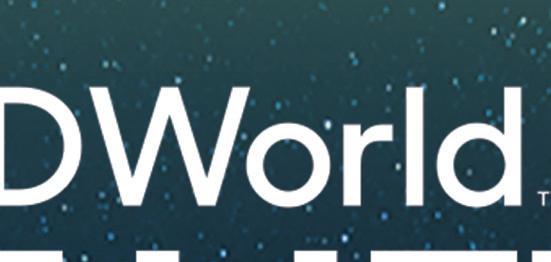
















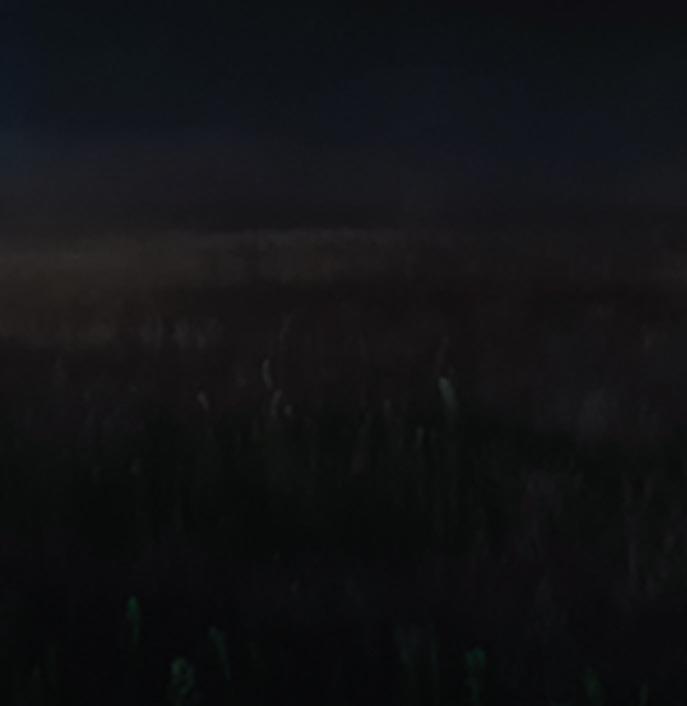




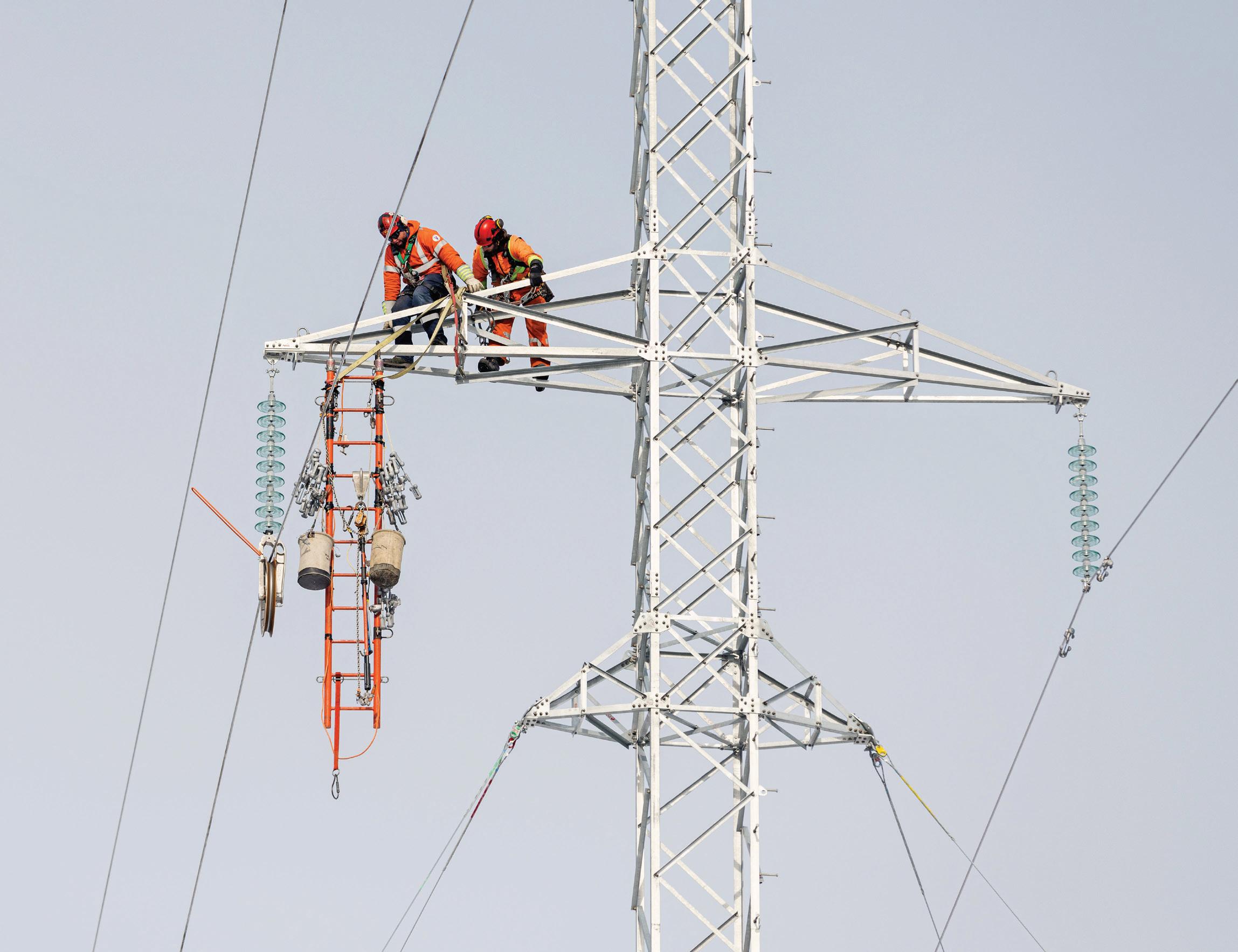
The Wataynikaneyap Power Transmission Project has connected 17 remote First Nations to Ontario’s power grid, replacing diesel with clean, reliable electricity through a historic Indigenous-led partnership.
By GARY SMITH and KARYN WHELAN, Fortis, Inc.
The Wataynikaneyap Power Transmission System has transformed electricity delivery for 17 First Nations in northwestern Ontario, Canada. For years, these remote communities relied on diesel generators, but this $1.9 billion CAD project, whose name means “line that brings light” in Anishininiimowin, has greatly improved energy access. Owned jointly by 24 First Nations (51%) in partnership with Fortis Inc. and other private investors, the project underscores the power
of partnership and shared vision in achieving sustainable energy solutions.
The project encompasses 1,800 kilometers (1118.5 miles) of transmission lines and 22 substations, connecting remote First Nations to the Ontario provincial power grid. Construction began in 2020 and was completed in May 2024. This extensive network enhances energy reliability for communities that faced the challenges of managing diesel –generated power.
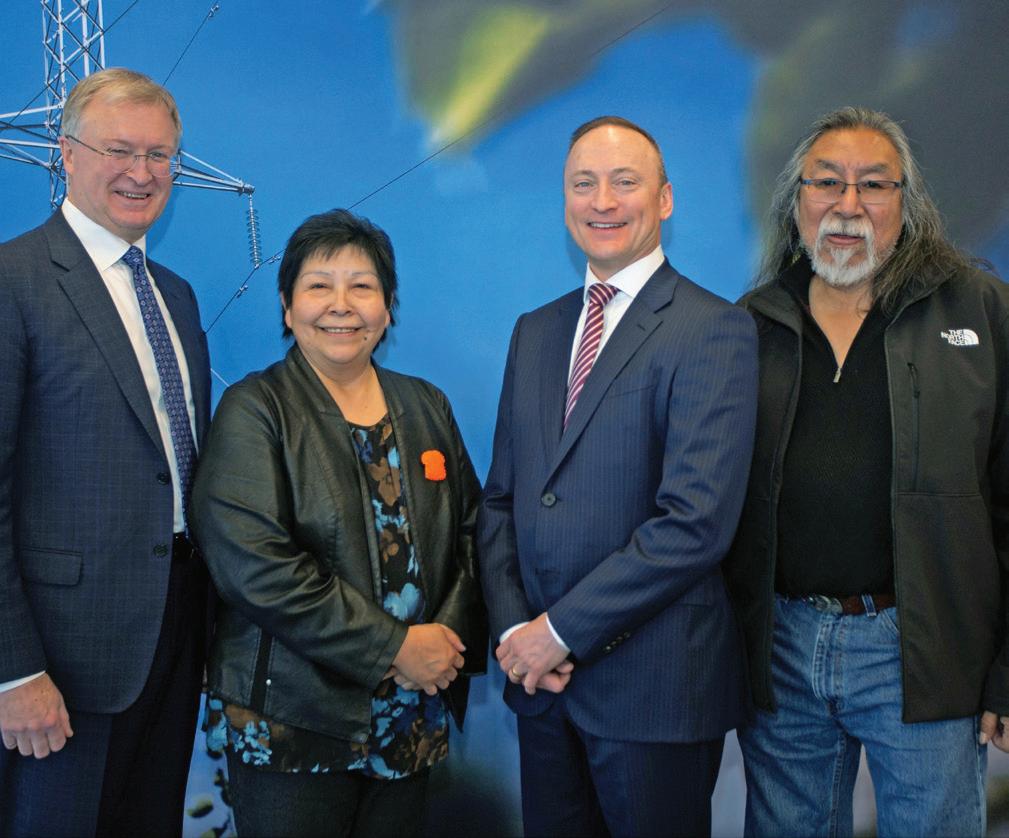
At the heart of the Wataynikaneyap Power Transmission Project is the success of 24 First Nations working together, and a strong connection between the First Nation partnership and Fortis. The partnership exemplifies how teamwork can overcome hurdles in the delivery of safe, reliable and clean energy.
Fortis, a diversified leader in the North American regulated electricity and gas industry with headquarters in St. John’s, Newfoundland and Labrador, was selected as partner and project manager in 2015 over six other bidders because it shared the First Nation’s vision to maintain majority ownership. After 25 years, the First Nations will own 100% of the transmission system, creating an unprecedented model of Indigenous ownership in Canadian infrastructure and empowerment.
As Margaret Kenequanash, CEO of Wataynikaneyap Power, reflects, “Owning infrastructure in our Homelands and building a solid foundation for future generations has been a success. This accomplishment is based on the collective vision and direction of all the 24 First Nations working together and supported by our partner Fortis.”
The motivation behind this project has deep roots, tracing back over 35 years, with dedicated First Nations leadership and many others at the forefront, navigated by Kenequanash. Until now, the 17 remote First Nations were not connected to the Ontario provincial power grid. Over 20,000 residents relied on unreliable and costly diesel-powered electricity — transported only during winter on ice roads or at expensive airlift costs — resulting in challenges for community life.
Diesel generators often operated at maximum capacity, resulting in load restrictions and leading to power outages, school closures, and food spoilage. First Nations were unable to connect
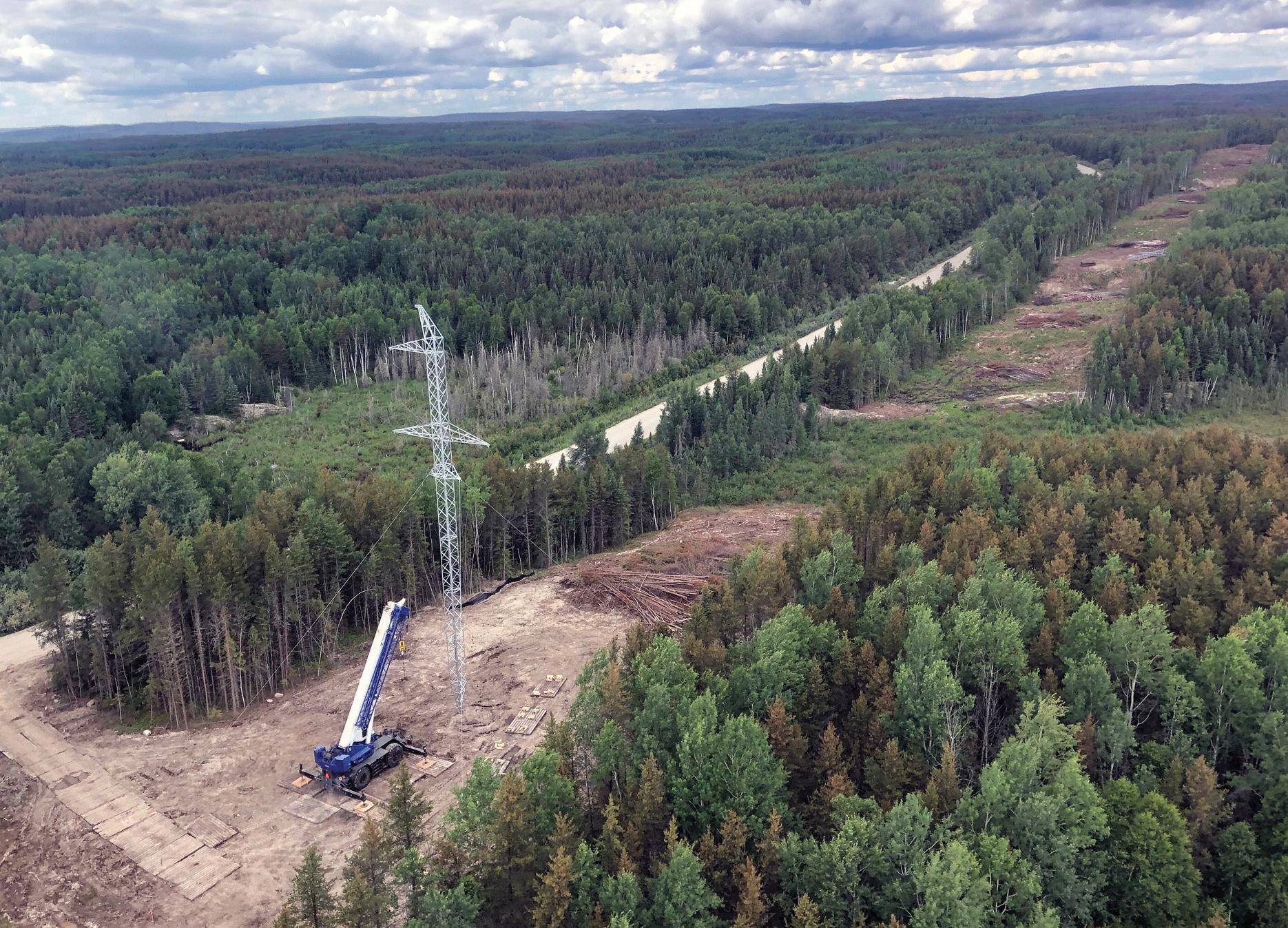
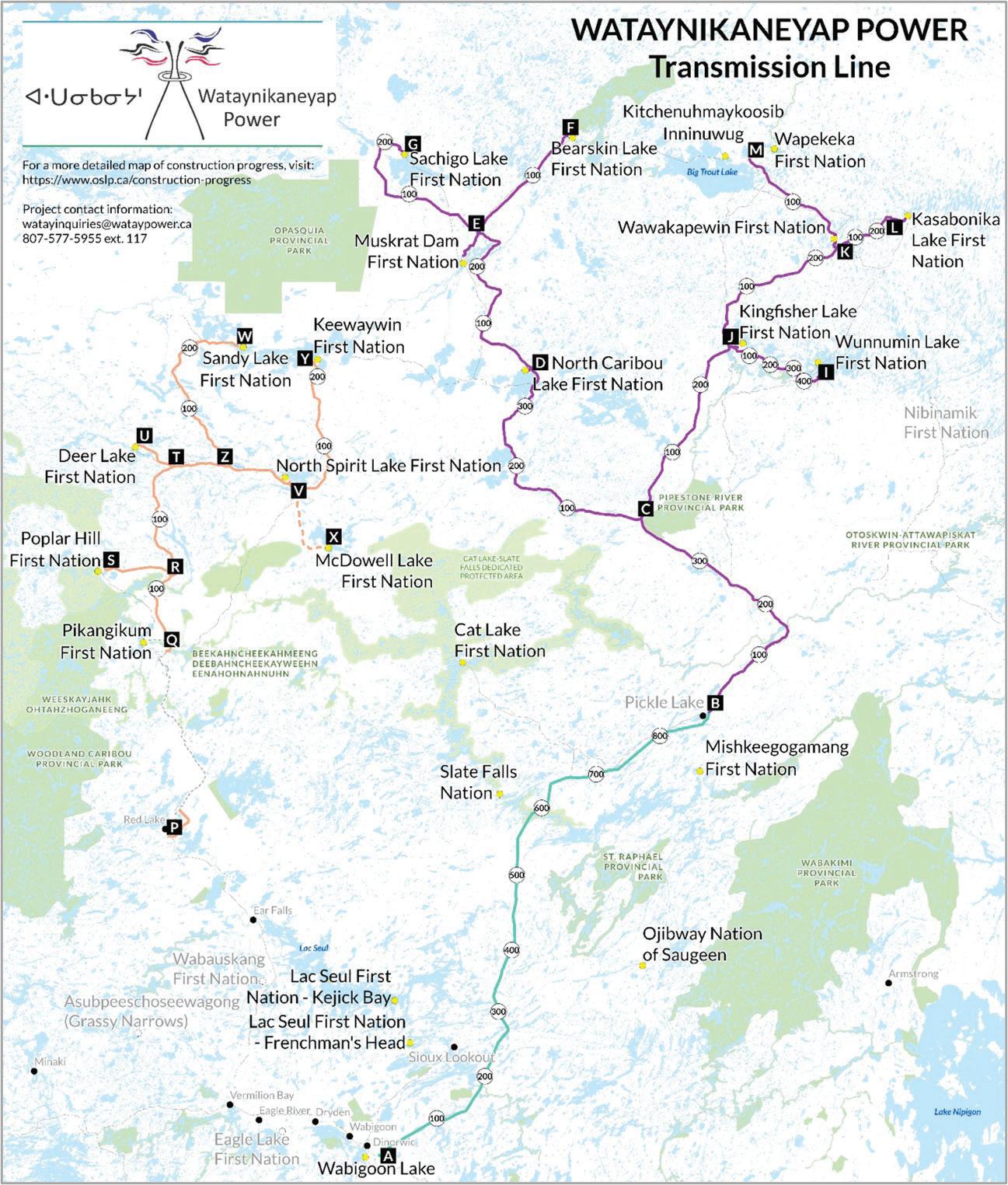
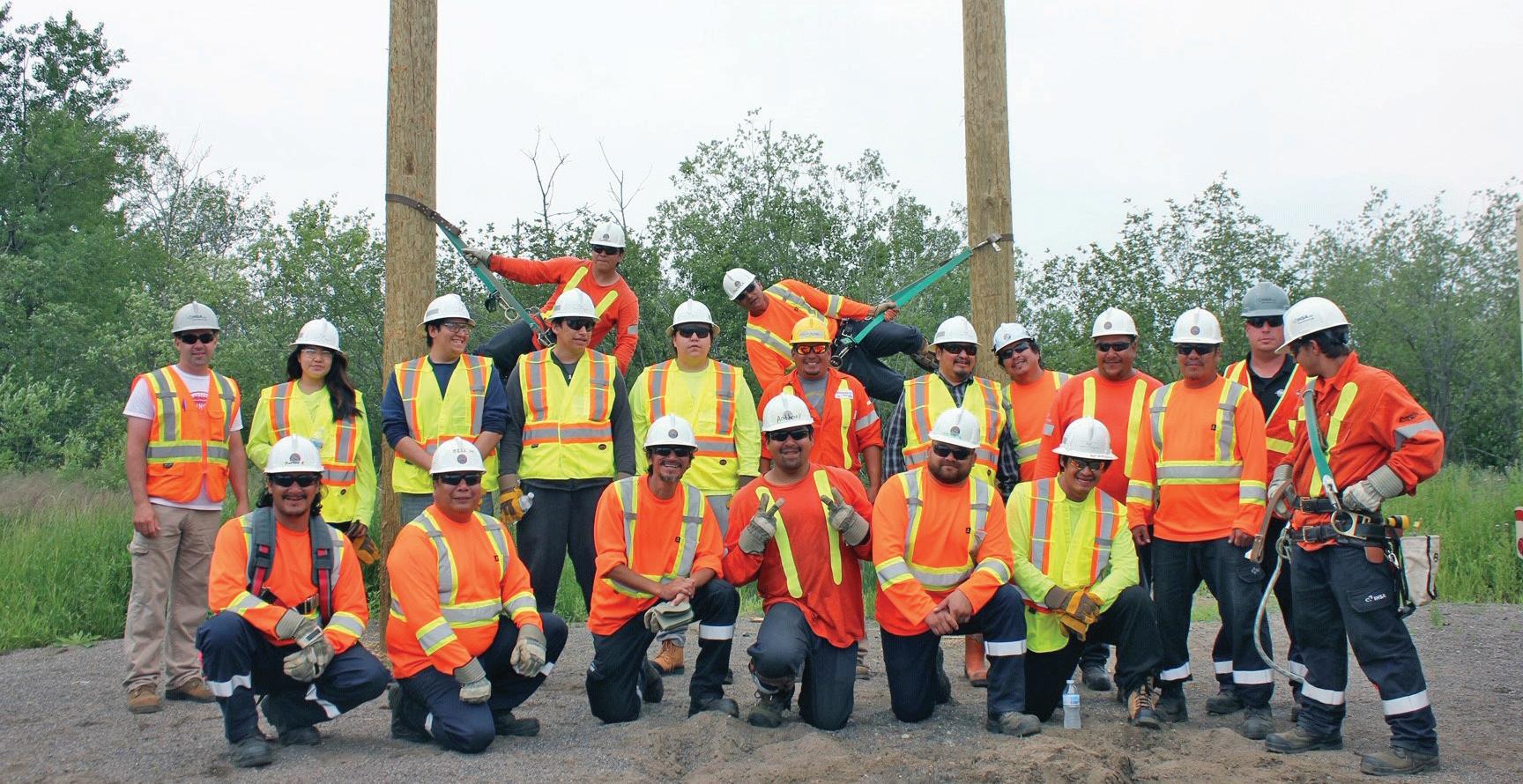
new homes to power or increase existing services due to power being at capacity. The financial burden was significant, with Ontario’s Independent Electricity System Operator (IESO) estimating diesel costs at around $90 million annually.
Completing this complex transmission mega project required immense leadership. The project was guided by an effective governance framework that ensured strategic direction and equal First Nations partnership with one voice. The principles established essential expectations for respecting First Nation lands and rights and ensured First Nations retained decisionmaking authority.
Wataynikaneyap Power, a licensed transmission company established for the project, is governed by a board of directors that includes two Fortis representatives, two First Nation partnership representatives, and an elder advisor. The board chair and CEO are both First Nation representatives, and the COO and CFO are from Fortis.
Fortis, with over 140 years of utility operations experience,
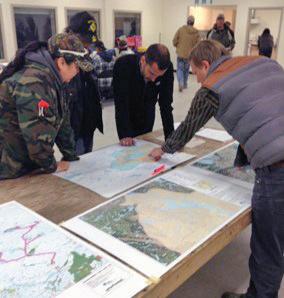
drew on industry veterans and experts from its companies, including ITC Holdings Corp — a large, independent electricity transmission company in the U.S. — to lead project management.
Fortis managed the construction of the project through Wataynikaneyap Power Project Management Inc. This team is responsible for everything from regulatory compliance, engineering, construction management and operations.
First Nations chiefs, elders, and tribal councils provided tremendous guidance and leadership and a solid foundation rooted in their culture, language and way of life. They effectively represented their communities to realize their vision of clean, reliable power and maintain infrastructure ownership.
Utility contractor Valard Construction, a Quanta Services company, was the engineering, procurement and construction (EPC) contractor. Hatch, a global engineering and project management firm, was the owner’s engineer, while Mott MacDonald provided independent engineering oversight services.
Extensive engagement with First Nations was conducted — without their consent, the project could not have proceeded. A community liaison was established for each of the First Nations communities. Regular meetings, engagement and transparent communication channels were established to address concerns, share updates and gather feedback. Much of the community engagement and preparedness was facilitated through
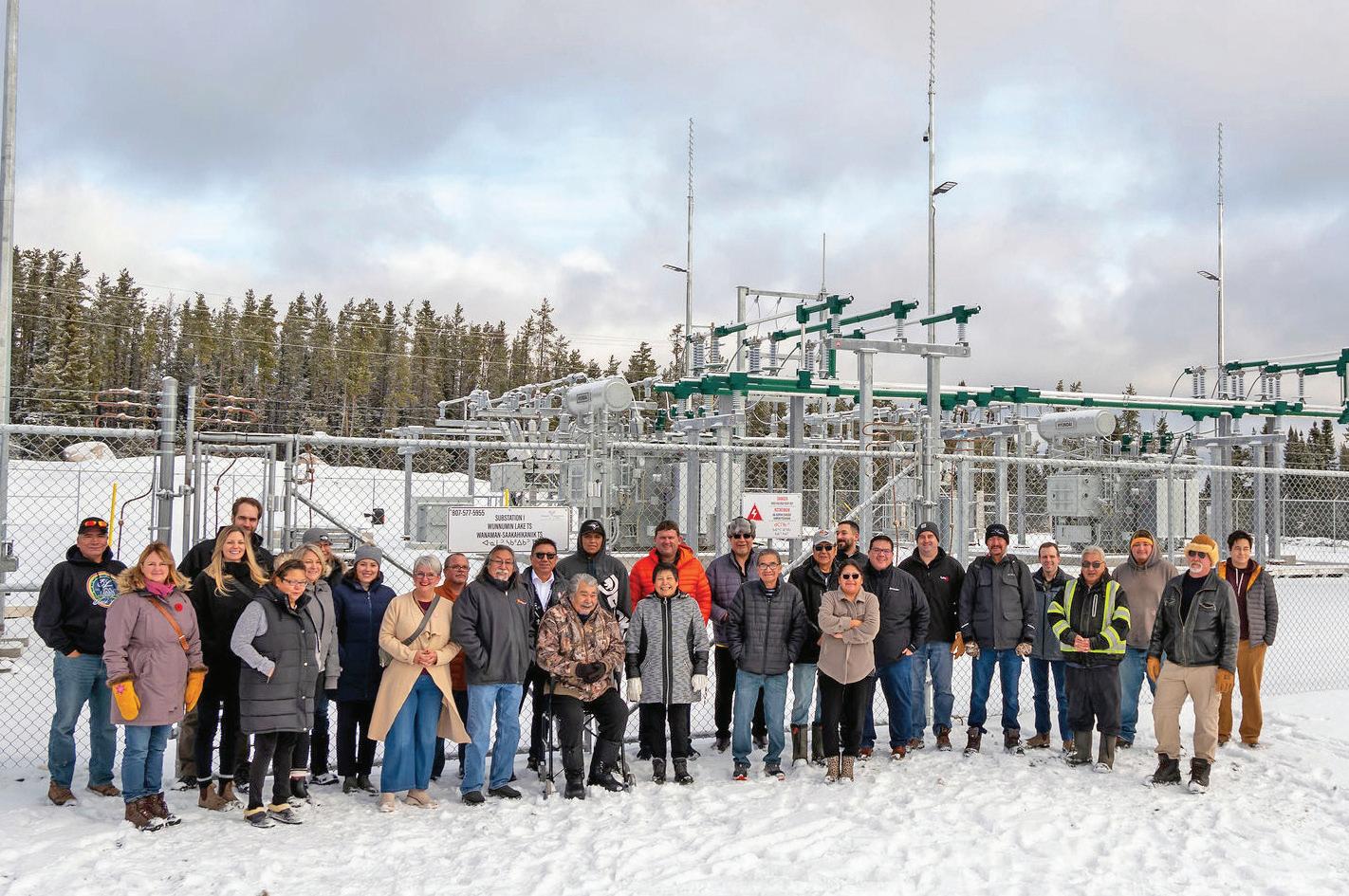

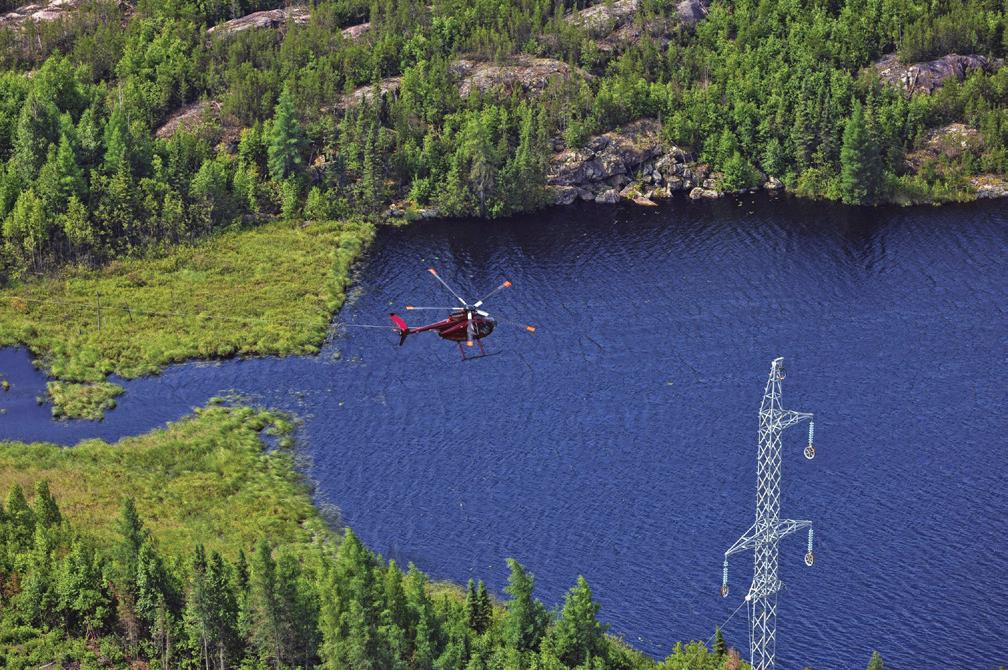
Opiikapawiin Services LP (OSLP), owned entirely by the 24 First Nations. Fifty-five training programs and nearly 3,000 engagements with leaders, community members and elders were conducted. Effective communication was also a cornerstone of the project. All newsletters and bulletins were translated into Anishininiimowin to ensure that information was accessible. Project funding was secured through a multifaceted framework involving financial support from the Canadian and Ontario governments, First Nations, Fortis and participation from five of Canada’s major banks.
To connect the 17 remote communities to the Ontario electrical grid, Wataynikaneyap Power had to conceptualize, design, and build a complete energy network, including 22 substations and an 1,800-kilometer transmission line comprised primarily of 230 kV and 115 kV lines.

The vast remoteness and size of the project footprint intensified the planning, engagement, communication, and ingenuity required to make this project a reality.
The energy network covers a large landmass nearly the size of Germany. Sixteen of the 22 substations and half of the transmission line were only accessible during winter. This meant nearly a year’s work had to be compressed into just three months when winter roads and ice roads were established. The project’s workforce increased from a couple of hundred employees to 1400 during the winter months, during which they worked in challenging weather conditions. Winter was also critical for materials planning, as anything needed for the upcoming construction season had to be transported a year in advance.
The project required meticulous planning and coordination, leading to comprehensive technical specifications for design, materials, and construction methods. Customized document management tools provided near real-time access throughout the process, while extensive geotechnical work ensured optimal structure design and placement.
Originally designed with wooden structures, the project shifted to steel towers. Although typically more expensive, declines in global steel prices and the benefits of installing in challenging northern terrain made this option more cost-effective. This change, advocated for by the First Nations, enhanced fire and weather protection, reduced environmental impact, and increased job opportunities.
Materials were procured globally, adhering to special reliability standards for a remote transmission line in Northern Canada. Over 90,000 helicopter hours were logged for tower erection, insulator hanging, transmission line stringing and transport. Extensive matting minimized the ground footprint, and the work schedule aligned with First Nations’ land use guidelines, safeguarding the environment and wildlife.

The leadership and expertise required for project success were evident throughout construction. One notable example was the COVID-19 pandemic. Two months after construction began in January 2020, the World Health Organization declared the pandemic.
The risks were significant, as workers across North America traveled to First Nations communities with limited medical resources. Facing the threat of a shutdown, the Project leadership teams quickly worked together with public health officials, the First Nations, and partners to develop a comprehensive COVID-19 management plan.
The health risks to the communities were very real, but so, too, was the risk of stopping the project. Delivering reliable power to the communities was crucial. Ultimately, the project was classified as an essential service and was granted permission to proceed.
The Wataynikaneyap Power Transmission System is creating sustainable, long-term opportunities with clean, reliable power already transforming lives.
New homes, schools, health facilities and fitness centers have been established. Kasabonika Lake First Nation added floodlights to its sports field, allowing recreational sports to continue into the evening, while Pikangikum First Nation enjoyed Christmas lights for the first time in over a decade.
The project is one of the most impactful projects Fortis has ever been involved in.
“The successful completion of this project is a testament to our commitment to our First Nations partners and their unwavering dedication to turning this vision into reality. Access to clean, reliable, and abundant energy will empower First Nations and pave the way for a brighter, more sustainable future for generations to come. Seeing the immediate and profound impact of the Wataynikaneyap Power Transmission Project on the communities it serves has been truly humbling,” said David Hutchens, President and CEO of Fortis Inc.
The Wataynikaneyap Power Transmission System is a powerful example of how public-private partnerships can enhance access to clean and reliable energy, especially in the face of growing global electricity demands. This Indigenous-led initiative illustrates a hopeful path forward for energy innovation, paving the way for a brighter, more equitable future for all.
GARY SMITH is executive vice president, Operations and Technology, at Fortis Inc. He oversees operations spanning $73 billion in assets and 9,800 employees, ensuring safety, reliability, and cybersecurity across Fortis’ regulated utilities in Canada, the U.S. and the Caribbean.
KARYN WHELAN is the corporate communications advisor at Fortis Inc., where she supports internal and external communications. She is a certified Strategic Communications Management Professional (SCMP).


OUR WUNPEECE TRANSMISSION SPACERS REDEFINE THE INDUSTRY STANDARD FOR UNDERGROUND POWER TRANSMISSION INSTALLATIONS. WITH PRECISION ENGINEERING AND UNMATCHED QUALITY,



Get more of what you need to stay in the know with valuable insights and timely product news. Sign up today for one of our many newsletters.
Delivers timely news and information from the power-delivery industry.
Follows the utility industry’s progression to an automated and efficient power grid.
Insights into the culture and work life of electric line workers: field operations tools and techniques, rodeo news and photo galleries.
Shares how utilities and their partners are building out T&D infrastructure.
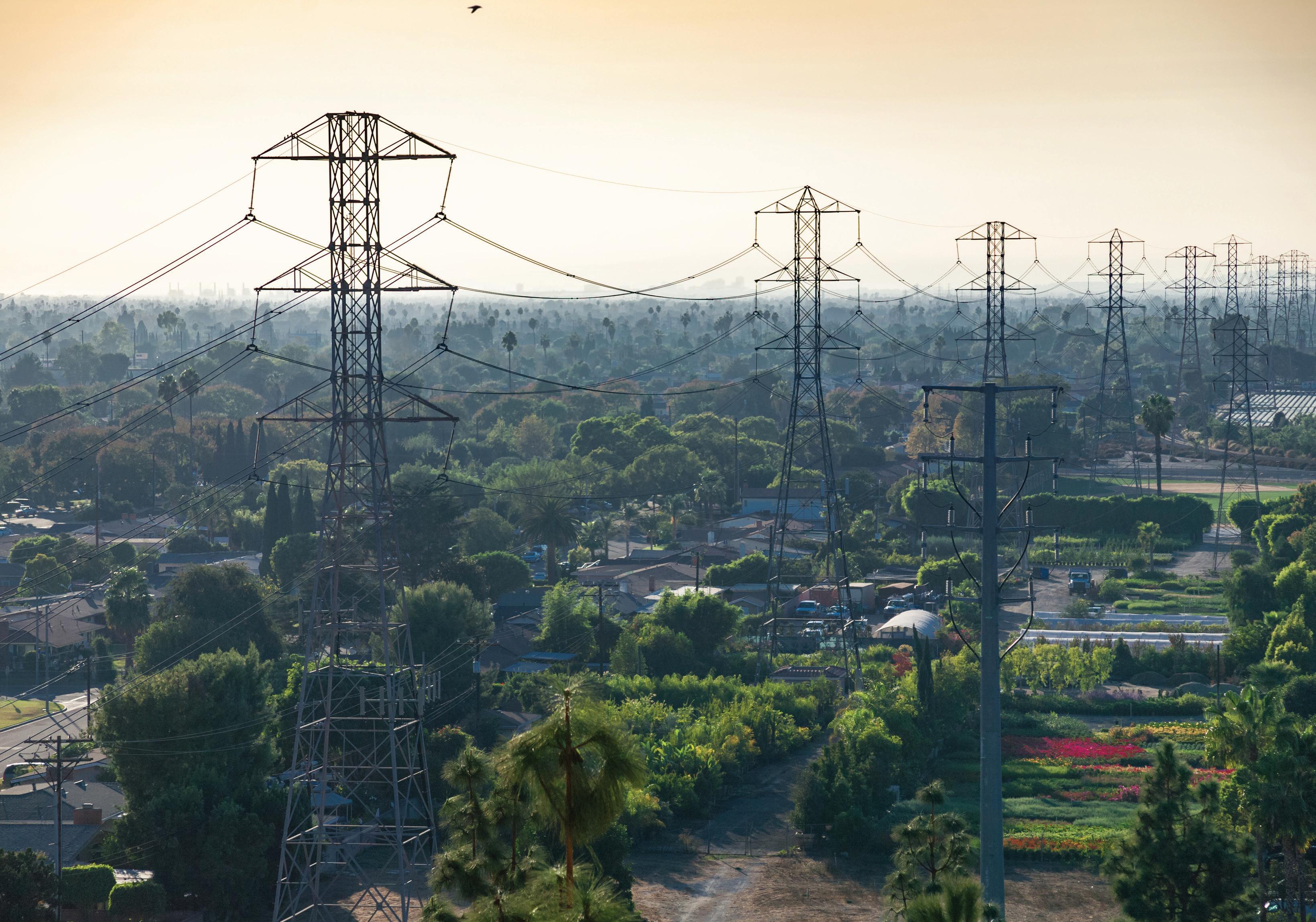
Electric bills are climbing faster than inflation — and the reasons go far beyond your utility company. From rising fuel costs and AI-driven data centers to political battles over clean energy and shrinking support for low-income households, a perfect storm is pushing prices higher. Here’s what’s really driving your monthly bill — and what it could mean for the future of the grid.
By JEFF POSTELWAIT, Managing Editor
Electricity costs are climbing in some areas faster than the rate of inflation, and there is plenty of blame to go around. Expensive generation sources, rising fuel costs, expanding data centers and the burgeoning impact of artificial intelligence are commonly blamed as drivers, leaving utilities, regulators and legislators playing catch up as costs hit poorer residential consumers hardest. At a time where seemingly everything is more expensive, electricity is no exception. The U.S. Bureau of Labor Statistics released a Consumer Price Index Summary in mid-August finding that all items indexed increased by 2.7% over the past 12 months before adjustments. Electricity rose by 5.5% for the yearly period ending
in July, and natural gas jumped 13.8% over the same period.
The average kilowatt of electricity used by retail residential customers rose to 17.47 cents from 16.41 cents between May 2024 and May 2025, according to the Department of Energy’s Energy Information Administration (EIA).
Rising energy prices affect lower-income households the most, with the average energy burden for these households hanging at around 8% of income, about three times the rate for other households, according to the National Energy Assistance Directors Association (NEADA).
Professional services firm WSP found that more than four in five Americans (83%) are concerned about how much
electricity costs. Even in this environment, however, 65% would be willing to pay more for electricity if that money went to building a more reliable power grid.
The same survey found that an overwhelming 92% of Americans would support new transmission lines in their communities if it helped meet growing demand, even if the projects did not benefit them directly.
President Trump has blamed adoption of renewable energy for higher electricity bills, which he campaigned on bringing down.
“Any State that has built and relied on WINDMILLS and SOLAR for power are
Trump wrote in an August 20, 2025 post to Truth Social.
Trump also halted federal wind energy permits, ordered departments to subject clean energy projects to further scrutiny, ended tax credits supporting renewable energy, and raised tariffs on steel and aluminum, which could impact construction costs for solar and wind farms.
An accelerated switch to a lower-carbon power grid that integrates more renewable energy can make electricity more affordable and lower the overall cost of living, according to analysis by the Paris-based International Energy Agency (IEA).
“In many cases, clean energy technologies are already more cost competitive over their lifespans than those reliant on conventional fuels like coal, natural gas and oil. Solar PV and wind are the cheapest options for new generation,” according to a May 2024 report from the IEA.
However, turning this potential into reality depends on upfront investment, particularly in developing countries,
according to the same report.
“The data makes it clear that the quicker you move on clean energy transitions, the more cost effective it is for governments, businesses and households,” said IEA Executive Director Fatih Birol. “If policy makers and industry leaders put off action and spending today, we will all end up paying more tomorrow.”
In hotspots in the South, the Washington, D.C. area, New England, South Dakota and Idaho, companies and their investors are pouring cash into data centers, which they are hoping will power artificial intelligence applications even as they cause local electricity bills to spike.
Data centers currently require 4% of total U.S. electricity, but thanks to the impact of AI, currently small but projected to snowball, this amount could increase just over 9%, according to a May 2024 report from the Electric Power Research Institute.
An August 2025 report from EPRI and Epoch AI describes AI’s growing power
needs as “exponential,” adding that just training AI models currently eats up some 100-150 MW per training run, and could consume 1-2 GW each by 2028.
Total U.S. AI power capacity is estimated at 5 GW today and could reach more than 50 GW by 2030, according to EPRI. AI is the primary driver of data center electricity hunger, with hyperscaler companies planning $370 billion in capital expenditures this year.
Forecasts are that AI could consume 5% of U.S. power generation capacity by 2030, according to EPRI.
“Although materializing more slowly, power demands from electrification of the economy ultimately could be much larger; however, electrification creates different electric system development needs,” according to the EPRI white paper.
Tom Wilson, principal technical executive at EPRI, said data center power demands grew slowly from 2007 to 2017 even as they processed much more data. This was mostly because of small enterprise data centers moving to larger, more efficient cloud facilities that could cool

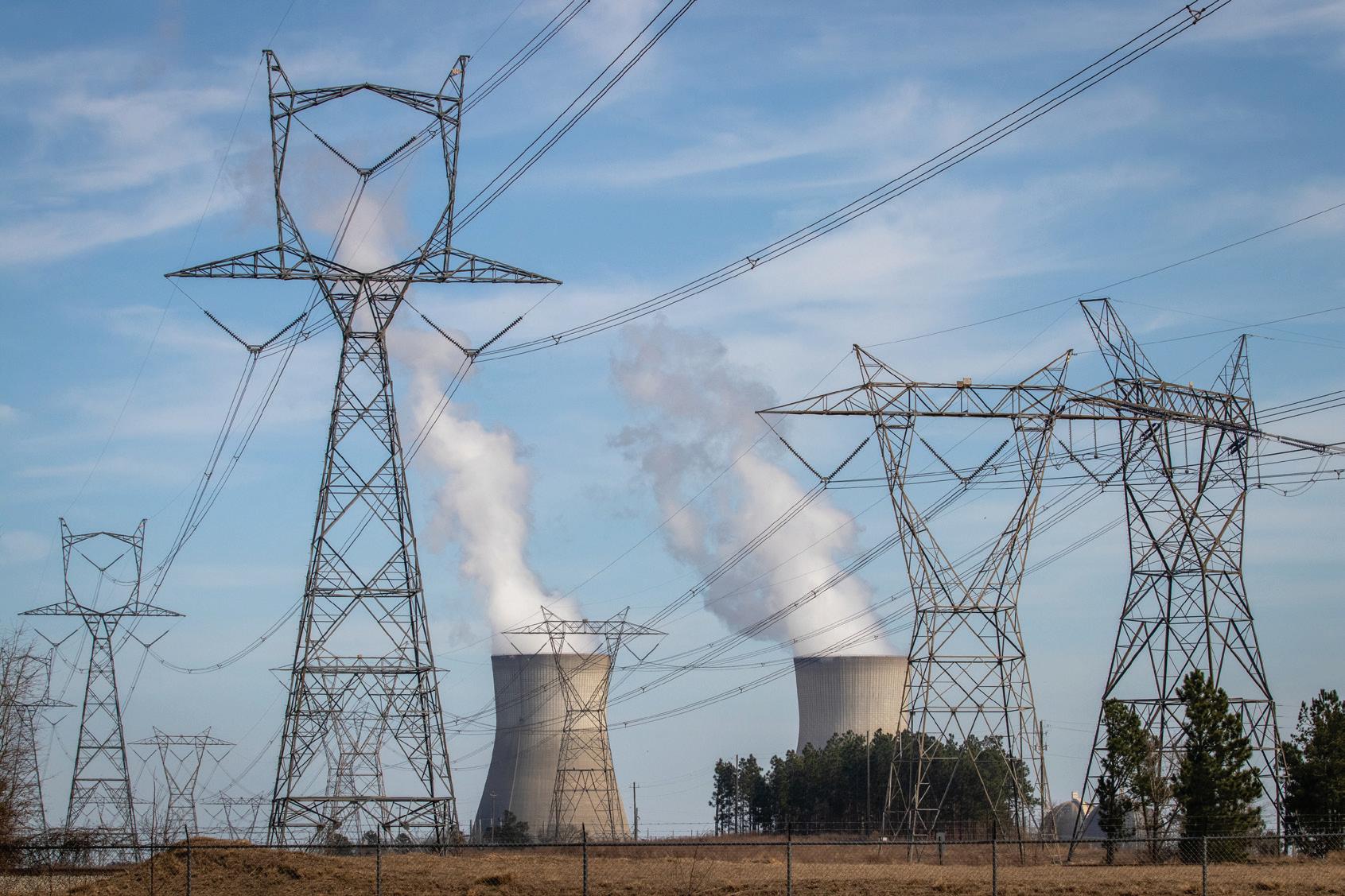
themselves more effectively and use IT hardware more efficiently.
“Since 2017, efficiency has continued to improve, but societal demand for data center services (e.g., video streaming and conferencing, navigation, commerce) has increased faster, leading to a doubling of data center power demand between 2017 and 2023,” Wilson said. “That demand is projected to more than double again by 2030 despite efficiency gains. Power costs are typically less than 10-20% of data center costs. As power becomes a more significant cost or a constraint on deployment, there will be increased incentive to innovate.”
To use a localized example of how demand is growing, Memphis Light, Gas & Water saw 150 MW in demand to accommodate the training runs conducted by xAI’s Grok training clusters, which were carried out in a former Electrolux factory in Memphis. This represented 5% of the utility’s peak power demand, according to MLGW.
Utilities are looking for ways to manage this demand in different ways. American Electric Power (AEP) unit Indiana Michigan Power (I&M), for example, signed a contract with Google for a demand response plan meant to balance Google’s
operational needs and I&M’s reliability and affordability requirements. In the plan, which is subject to the approval of regulators, Google would curtail its electricity use during periods of high demand to reduce peak load.
“As we add new large loads to our system, it is critical that we partner with our customers to effectively manage the generation and transmission resources necessary to serve them. Google’s ability to leverage load flexibility will be a highly valuable tool to meet their future energy needs,” said Steve Baker, president and chief operating officer of I&M.
In a first-of-its-kind deal, Meta Platforms agreed with Constellation Energy to keep a nuclear power plant open to help serve its power needs. The 20-year power purchase agreement would enable Constellation to relicense and retain operations at its Clinton nuclear plant for another two decades, while delivering 1121 MW of nuclear power to Meta, parent company of Facebook and Instagram.
Improvements in hardware efficiency can cut AI’s power demand, and researchers expect these improvements to continue to net savings in electricity consumption, but the overarching expansion of AI activity
The Alvin W. Vogtle
Plant near Augusta, Georgia. Predicted jumps in energy demand has some considering building new nuclear units.
ID 268845701 © Dj Jennings | Dreamstime.com
means overall demand is likely to continue — perhaps even resulting in the industry hitting a predicted “wall” imposed by power generation limits.
“The 4x/year growth is very rapid and must slow eventually, almost certainly by the 2030s, absent a drastically transformed economy. The key uncertainty is when, not if, this growth will slow down,” according to the EPRI report on the forecast data center power demand from AI training runs.
It is unclear as of yet whether the current capacity of the power grid can meet the demand from AI. Generation capacity and lack of transmission lines could impact this growth. The AI industry’s future growth will depend on the power grid and how much stakeholders are willing to invest in it.
“If AI demand hits supply constraints for power, policies to unlock energy growth may be needed to enable continued growth, which may disrupt traditional planning processes and have environmental consequences. Power growth also poses challenges for tech companies that have already committed to using clean energy,” EPRI’s report states in its conclusion.
Wilson said power plants and power lines take years to build, which represents a challenge to meeting this demand.
“While there is not a “wall” at a certain size, the challenges of large infrastructure projects are clear. One opportunity that the paper discusses is spreading training geographically. This strategy has been demonstrated but likely increases training time and cost. Distributed training could be valuable if there is plenty of power in a region, but it cannot be quickly delivered to a single data center site,” Wilson said.
Wilson said one of the key strategies that AI companies, utilities and other stakeholders are advancing is flexible data center operation, transitioning some data centers from being passive loads — unaware of what is happening on the grid — to ones that are aware of grid stresses and are able to respond when needed.
“Historically, data centers have been viewed as running all the time, which means that when a data center requests a connection, the grid has to plan to serve increased loads in all hours. Flexibility operation can be achieved through varying computational demands at some sites, by using onsite or nearby generation or storage assets to reduce the data center’s impact on the grid, or both,” Wilson said.
Flexible data center operation could speed connection, decrease or delay needed grid buildout, and can better utilize existing grid assets, lowering grid costs and improving reliability.
Worsening the picture for poor families is the pressure the recent federal budget is putting on the Low Income Home Energy Assistance Plan (LIHEAP), which is the primary way for low-income people to get help paying for their electricity bills.
LIHEAP is currently in crisis, Mark Wolfe, Executive Director of NEADA, which represents those who administer LIHEAP at the state level, testified in June 2025 to the Senate Subcommittee on Labor, Health and Human Services and Education and Related Agencies.
In April, the Trump Administration eliminated the Division of Energy Assistance — the office within the U.S. Department of Health and Human Services (HHS) that oversees LIHEAP — and fired the entire staff. HHS has not released a plan for administering the program without DEA staff.
“This gutting of federal support could not have come at a worse time for the households served by LIHEAP. Oneout-of-six families are currently behind on their home energy bills and the total amount these families owe their utilities is approximately $21 billion, the highest level since 2021 and up by about 30 percent since the end of 2023,” Wolfe testified, adding more than 37% of families making less than $50,000 a year reported being unable to pay an energy bill at least once in the past year.
The only way for LIHEAP to keep up without cutting supports is to get additional funds, Wolfe said.
“In order to keep up with rising energy costs, rising temperatures, and the increase in extreme weather events, LIHEAP needs $6 billion in FY26 funding plus $1 billion for the program’s contingency fund, for a total of $7 billion,” he said, urging a rejection of Trump’s recommendation to cut LIHEAP funds.
The budget proposal contains inaccuracies and a lack of understanding in
how LIHEAP works and how electricity bills are paid, he said. The budget cites a 15-year-old Government Accountability Office report identifying potential cases of fraud, but the GAO since confirmed actions were taken to reduce fraud.
The administration also called LIHEAP unnecessary due to some states and utilities having policies against cutting off power to low-income families, he said.
“This statement demonstrates a gross misunderstanding of who LIHEAP helps and how it helps them,” he said. “Seasonal shut-off moratoriums that many states have put in place to protect families during periods of extreme temperatures only delay bill payment temporarily. After the moratorium ends, the bill is due. Families that could not afford to pay their bill during the shut-off moratorium will likely not be able to pay off the amount owed when the moratorium ends.”
Without LIHEAP’s ability to help pay bills, even more families could face the prospect of having their electricity shut off.

As the grid evolves, so must our understanding. The Insulator Education Initiative equips technical teams with clear, practical knowledge to keep pace with industry change. Through impartial videos, tools, and comparison tables, it empowers smarter insulator decisions — and stronger, more resilient grids.

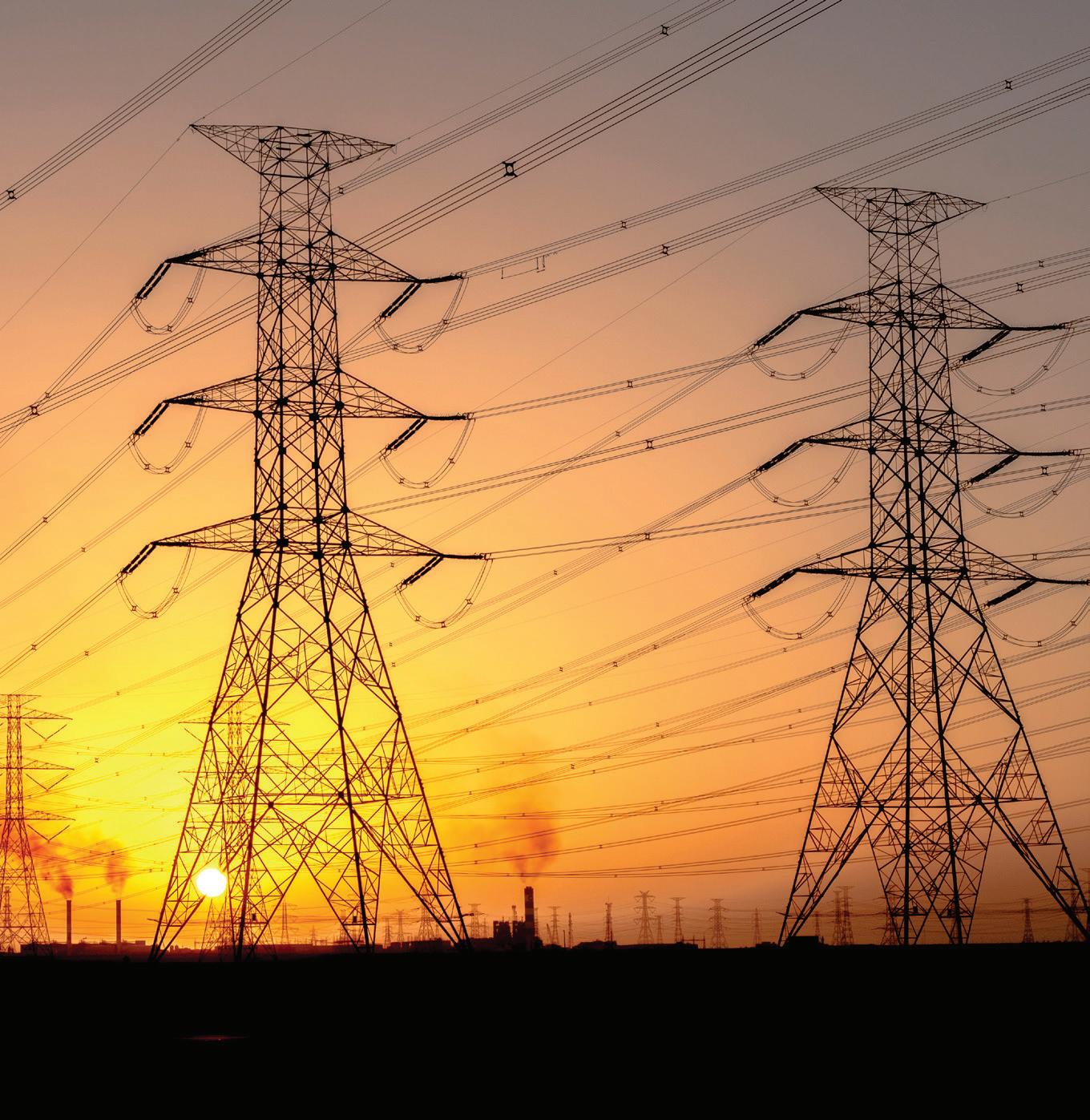



The utility is reimagining how its workforce learns by introducing immersive, multimodal training tools that blend classroom, digital, and field experiences.
By ALEX CHASSON-COLEBOURN, Eversource Energy
The utility industry will need 600,000 new utility workers over the next decade and is moving from flat growth over the past 20 years to experiencing an expected growth rate of 15% over the next five years, according to the Center for Energy Workforce Development’s (CEWD) 2023 Energy Workforce Survey.
Today’s utility landscape demands a workforce that is continuously trained,
highly skilled, and adaptable to changing technologies and industry practices. Eversource Energy, New England’s largest energy delivery company, understands this challenge well. That’s why the utility is undertaking a major transformation of its electric and gas training programs, which includes an innovative digital learning initiative.
In 2022, Eversource began leveraging the power of multimodal content
in eBooks and mobile applications from Index AR Solutions to modernize traditional training across a range of operational areas — from underground electric and substation work to gas maintenance and construction, corrosion, damage prevention and others. The applications facilitate learning techniques that remove learning friction, particularly among younger generations of workers entering the
workforce, through a combination of visual and auditory multimodal content. By the end of 2026, Eversource will have implemented about 85 digital training applications, which will help its field workers efficiently progress through their training curricula and support utility workforce development.
The collaboration between Eversource and Index AR Solutions included a Field Engineering and Field Communication project — a comprehensive initiative that created dozens of custom eBooks and mobile apps designed in close collaboration with Eversource’s subject matter experts. These tools are available to be be used during instructor-led training and selfpaced learning environments, accessible on tablets and laptops that workers and trainees can use at their convenience.
Ultimately, this type of content creation is not about replicating what was already in a binder. Rather, it produces a living, breathing training resource through its multimodal nature that takes advantage of preserved experience and evolves with the workforce. This can help create a training environment that is flexible, immersive and reflective of real-world tasks, as well as user-friendly. It also makes learning accessible wherever and whenever it is needed, whether in a classroom, at home or on the job site.
By 2027, Eversource will have digitized training for the following programs: overhead electric; underground electric; substation; electric meters; damage prevention; field engineering and field communications; gas meter service; corrosion; and gas maintenance and construction.
These programs represent core competencies for the utility’s electric and gas operations. Transitioning them into digital formats not only improves knowledge retention but also enhances safety and efficiency across the board.
For instance, in the Underground Electric training, workers can visualize the internal components of a submersible
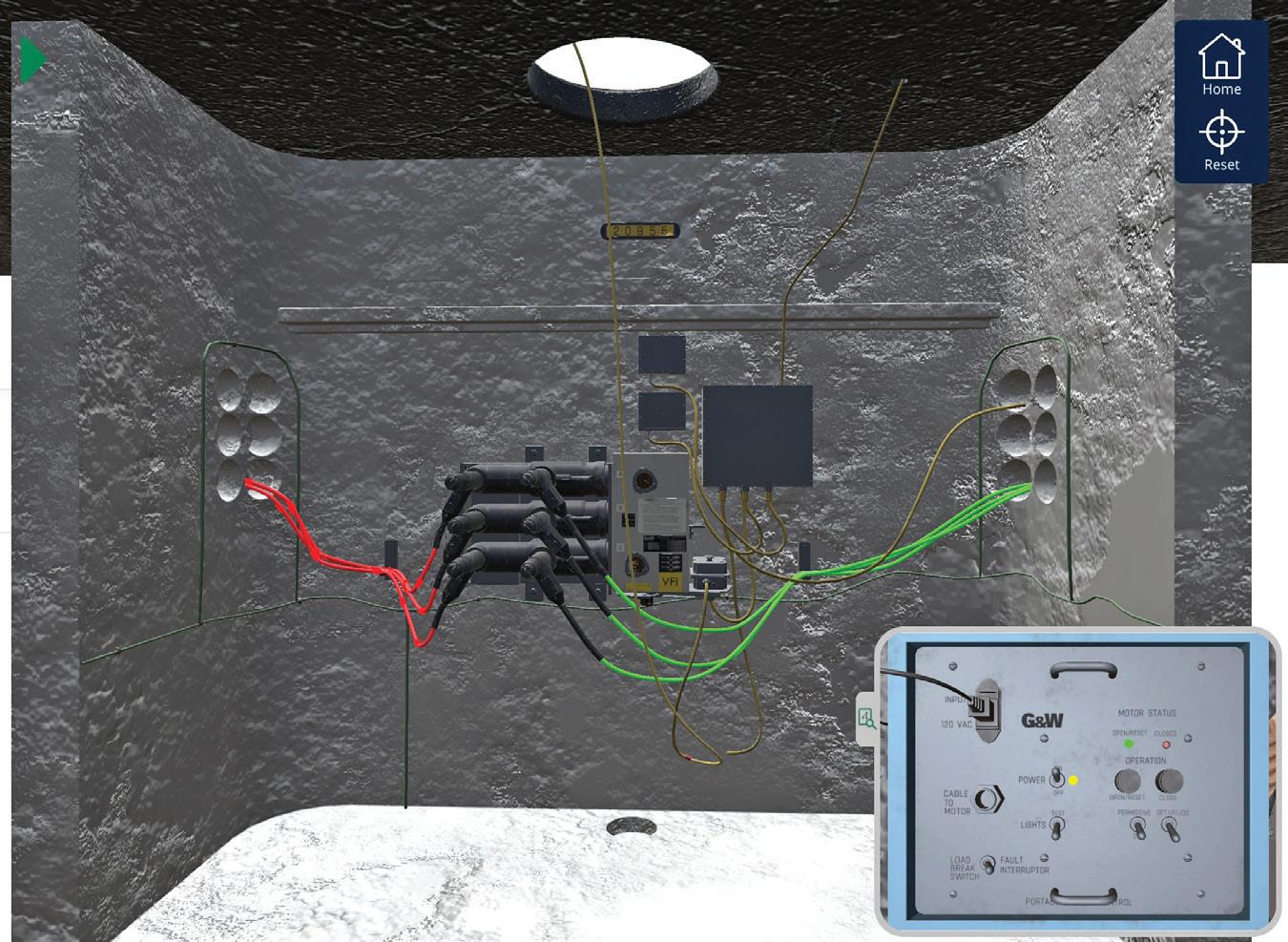
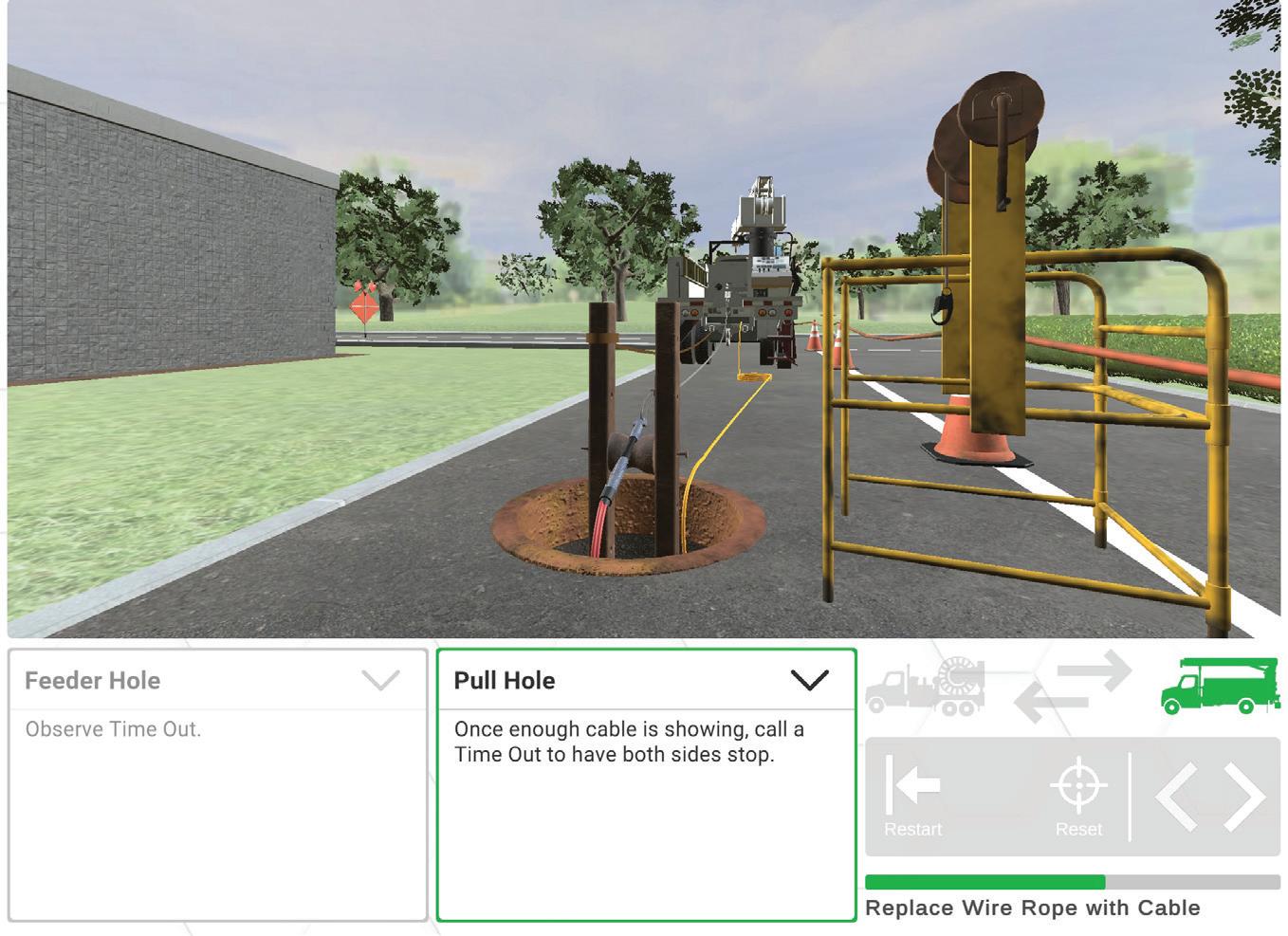
transformer and practice numerous wiring configurations in a safe, instructor-led environment. The content-rich corrosion program teaches users about the different types of interference, how to test for it and ways to mitigate it within a cathodic protection system.
Looking ahead, the Gas Maintenance and Construction apprentice training will enable workers to interact with stepby-step procedures for pipe installation, leak detection, and system shutoff — all
through animated, touch-enabled experiences that promote greater understanding and muscle memory.
One of the main challenges facing utilities nationwide is the loss of institutional knowledge due to an aging workforce. As experienced technicians and engineers retire, there is a critical need to transfer their know-how to the next generation quickly and effectively.
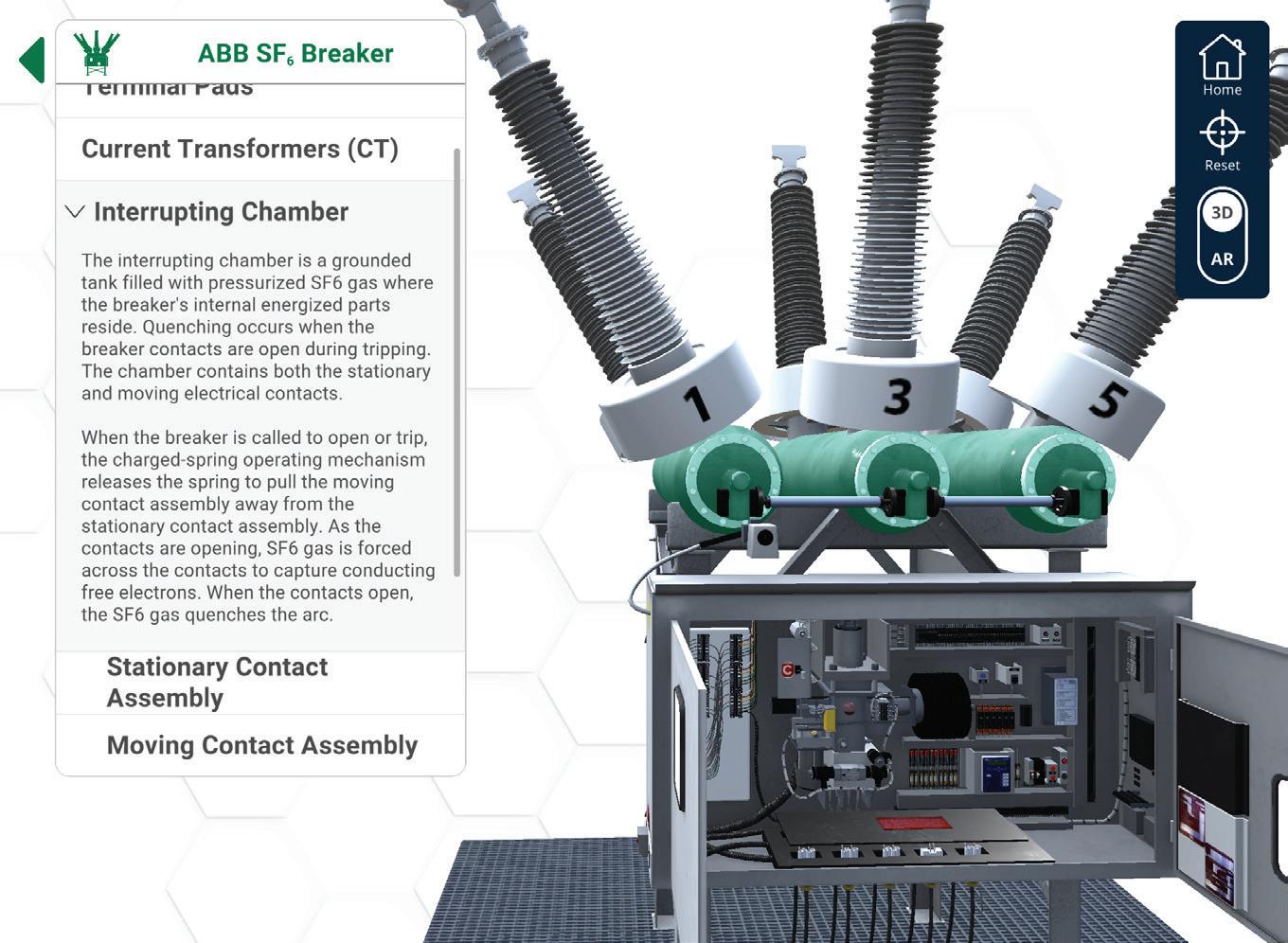
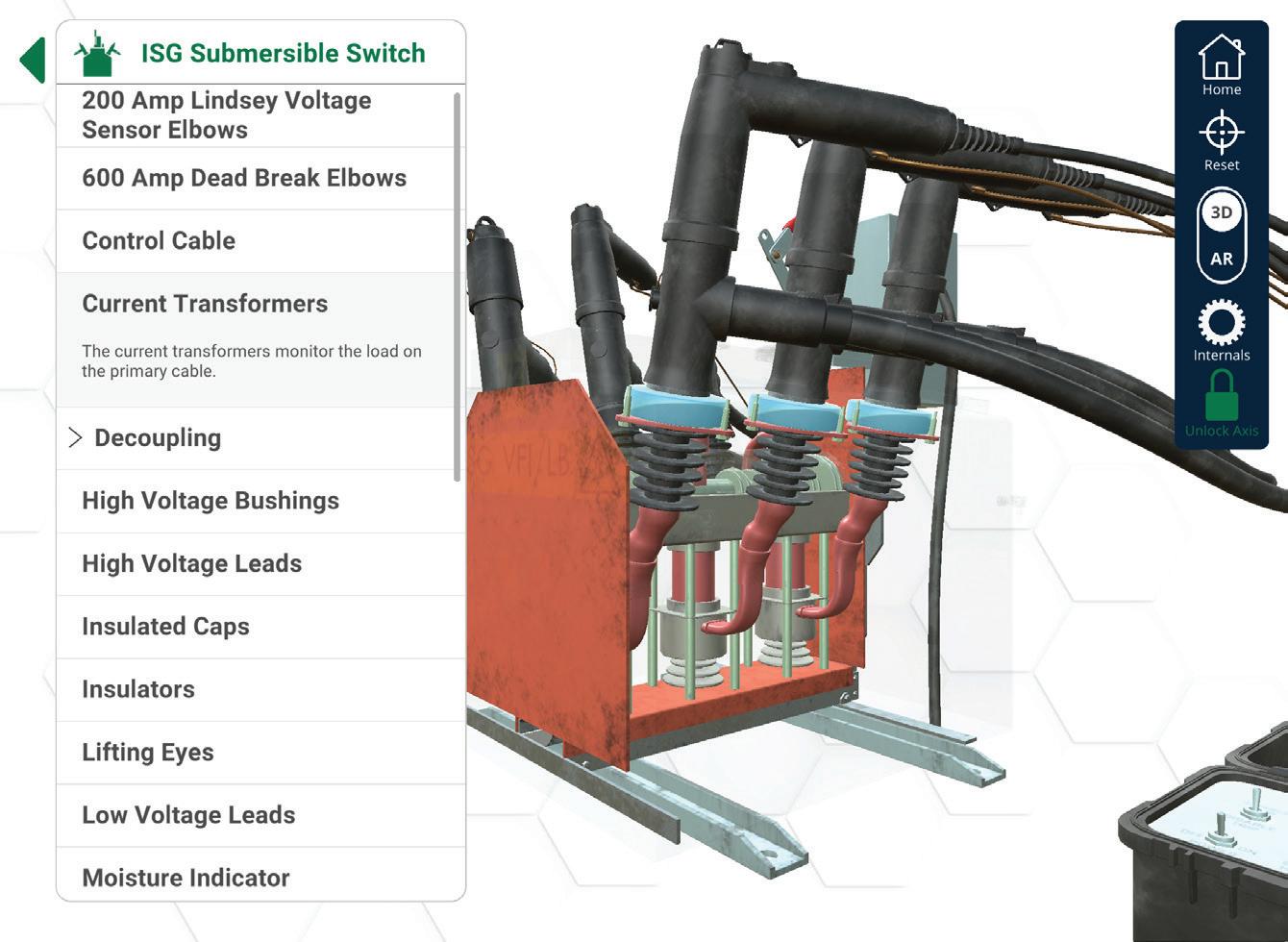
Digital training tools and development processes are designed to capture and codify that knowledge. For a gas technician apprentice, being told how to perform a task such as tapping and stopping is one thing. Being shown how to do it by a journeyman who is in the trench and executing it step-by-step is quite another. Through interviews, real-world footage, and subject matter expert input, digital modules can encapsulate best practices and standardized procedures that new
hires and seasoned employees alike can access anytime.
This approach also allows for continuous learning. Digital modules can be updated with new content, regulations or procedures, ensuring the workforce remains aligned with current standards.
Multimodal content also caters to different learning styles, meeting workers where they are. It acknowledges the reality that people learn in different ways — whether that is reading, watching videos
or by hands-on experience — supporting a full range of learning styles and fostering greater engagement.
Most importantly, these tools contribute to safer operations. By practicing in a virtual environment first, workers can familiarize themselves with complex tasks and high-risk procedures before attempting them on equipment in the classroom and in the field. This reduces the potential for mistakes and builds confidence, both of which are crucial in environments where safety is paramount.
Eversource’s commitment to deploying 85 training applications over four years reflects the company’s long-term strategy focused on adaptability, innovation and excellence in workforce development.
Each module is customized to reflect Eversource’s unique procedures, terminology, and equipment, making the content not only engaging but directly applicable to daily operations. Furthermore, the use of tablets means the material can be deployed in remote areas, on job sites or during emergency response situations — providing just-in-time learning wherever it’s needed.
The utility industry faces unprecedented demand pressure from economic development and the increased interconnection of new energy resources and technologies, as well as growth in AI-driven data center development, electric vehicle infrastructure expansion, digital currency adoption, and more. Given those factors along with the accompanying workforce transitions, incorporating technology in training is more essential than ever. Specific to Eversource, the company will continue to focus on developing advanced training programs that support front-line employees and enhance operational performance.
ALEX CHASSON-COLEBOURN (alexandria.chassoncolebourn@eversource.com) is a director of technical training at Eversource Energy where she leads curriculum development and pipeline program development with local area community colleges. She has more than 20 years of experience in designing, delivering and managing innovative training programs across various industries.





1.Transmission & Distribution World’s Vegetation Management Resource Center
It’s your resource for management from programs and safety, to tools and technology. Regulatory compliance, public health standards and environmental topics are also covered. tdworld.com/vegetationmanagement
2.Vegetation Management Insights Arrives Monthly In Your Inbox
Our monthly e-newsletter from the editors of T&D World keeps you current with industry info. Stay ahead of vegetation management best practices. Don’t miss a thing. subscribe.tdworld.com/subscribe


The City of Westerville, Ohio transformed its vegetation management program by using satellite data and AI to strengthen grid reliability.
By JOE DELONG, City of Westerville Electric Division
Municipal-owned electric utilities play a vital role in society. Unlike investor-owned utilities, which balance shareholder interests with service delivery, public power utilities operate with one clear mission: delivering highquality service and value to the communities they serve for the long term. Their focus is on meeting the unique needs of their customers, providing safe, reliable electricity at affordable rates.
To uphold their public service obligations and maintain customer satisfaction, municipal utilities must minimize outages

and maximize operational efficiency. Vegetation management (VM) plays a crucial role in this mission. Overgrown or hazardous trees near power lines are among the leading causes of service disruptions and safety hazards. As the impact of climate change intensifies, effective VM becomes even more critical for grid reliability. Yet, many municipal utilities face significant hurdles in modernizing their operations to meet these growing challenges. Many still rely on traditional, labor-intensive VM methods that are costly, time-consuming and prone to human error. Compared to their investor-owned counterparts, municipal utilities tend to adopt new technologies more slowly, constrained by bureaucratic processes, political oversight and limited funding for major capital projects. Without profit-driven incentives, operational efficiency improvements are not always a top priority. However, the landscape is shifting, and an increasing number of municipal utilities are embracing innovative solutions to enhance reliability and efficiency.
One such example is the Westerville Electric Division in Westerville, Ohio. Serving more than 40,000 residents, Westerville turned to innovation to improve service reliability and operational efficiency. Confronted with budget constraints, growing regulatory demands and increasing vegetation risks, the utility pursued a more advanced approach to vegetation management. By using satellite imagery and AI-driven analytics, Westerville successfully reduced vegetation-related outages by 41%, optimized resource allocation and strengthened grid resilience.
This case study explores how Westerville implemented a data-driven strategy and provides insights for other municipal utilities looking to modernize their approach to vegetation management.
Westerville Electric Division faced significant challenges in managing vegetation
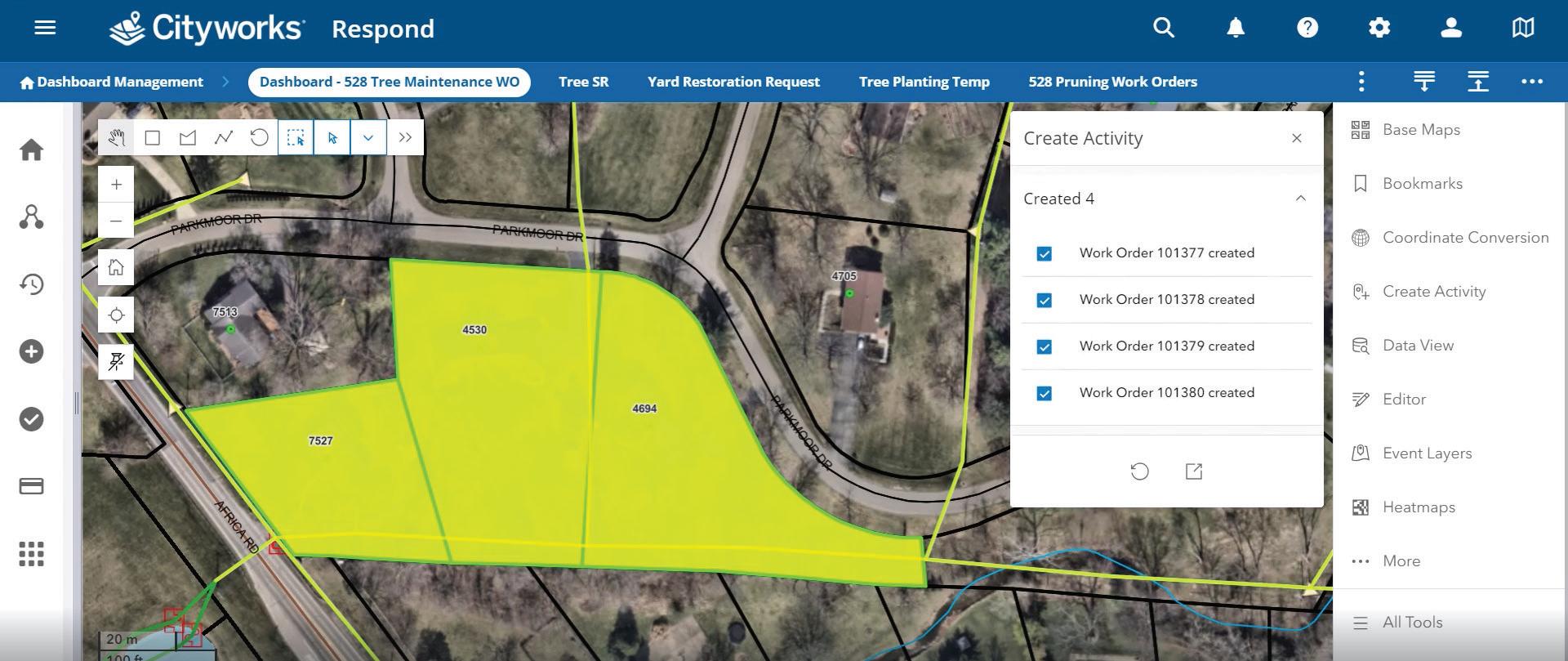
along its power lines, largely due to outdated, manual processes. These issues not only hindered operational efficiency but also increased the risk of vegetation-related outages.
A major obstacle was the reliance on manual work management. Westerville used paper maps and outdated record-keeping, leading to inefficiencies and slow response times to vegetationrelated issues. Field crews worked with fragmented data, making it difficult to track maintenance progress or address areas of concern promptly. This method resulted in errors, duplicated efforts and missed opportunities for optimization.
The division’s reactive maintenance approach further compounded these issues. Previously, Westerville relied on biannual aerial imagery and customer-reported problems as the main sources of information to identify vegetation risks. While this provided some oversight, it was insufficient and far from ideal, leaving little time for corrective action when risks were identified. By the time issues were spotted, the risk of an outage had already escalated.
Seamless integration enables Westerville to prioritize tasks effectively, creating work orders in Cityworks based on LiveEO’s actionable insights.
The utility also faced workforce challenges. As experienced employees retired or transitioned out of the workforce, much of their valuable institutional knowledge, such as insights into vegetation growth patterns and critical areas of concern, was at risk of being lost. This posed a challenge in maintaining operational continuity and ensuring that new employees could access the knowledge needed to effectively manage the utility’s infrastructure.
Finally, Westerville experienced data silos due to unharmonized systems and processes. Although the utility used Cityworks for work planning, it lacked a single source of truth for all relevant data. This complicated decision-making, leading to inefficiencies and missed opportunities for improved performance.
The Westerville Electric Division set out to transform its VM program by adopting a data-driven strategy. Recognizing that the current methods employed left the grid vulnerable to outages,
Westerville’s success story underscores several key takeaways for vegetation managers looking to modernize their programs:
1. Shift to condition-based maintenance: Transitioning from a cycle-based approach to a condition-based maintenance strategy using satellite intelligence allows utilities to focus on addressing risks as they emerge, reducing outages and improving grid reliability by taking action based on actual vegetation conditions rather than a fixed schedule.
2. Optimize resource allocation with risk-based prioritization: Prioritizing high-risk areas based on datadriven insights helps utilities allocate resources effectively, ensuring that the most critical issues are addressed first while minimizing unnecessary spending.
3. Seamlessly integrate systems for better data sharing and decision-making: Integrating satellite-based monitoring tools with existing systems enables utilities to consolidate
data from multiple sources. This integration streamlines decision-making, improves coordination across teams and ensures that everyone has access to the most up-to-date insights, which is key for faster response times and more efficient operations.
4. Enhance operational continuity with knowledge retention: Implementing digital systems that centralize data and insights ensures that valuable institutional knowledge is preserved and accessible, reducing risks associated with workforce turnover and enhancing long-term operational continuity.
5. Increase stakeholder buy-in with data-backed results: Demonstrating the effectiveness of new technologies with clear, data-backed results not only justifies investments in modern vegetation management but also helps secure ongoing support from stakeholders, such as city councils, utility boards and customers.

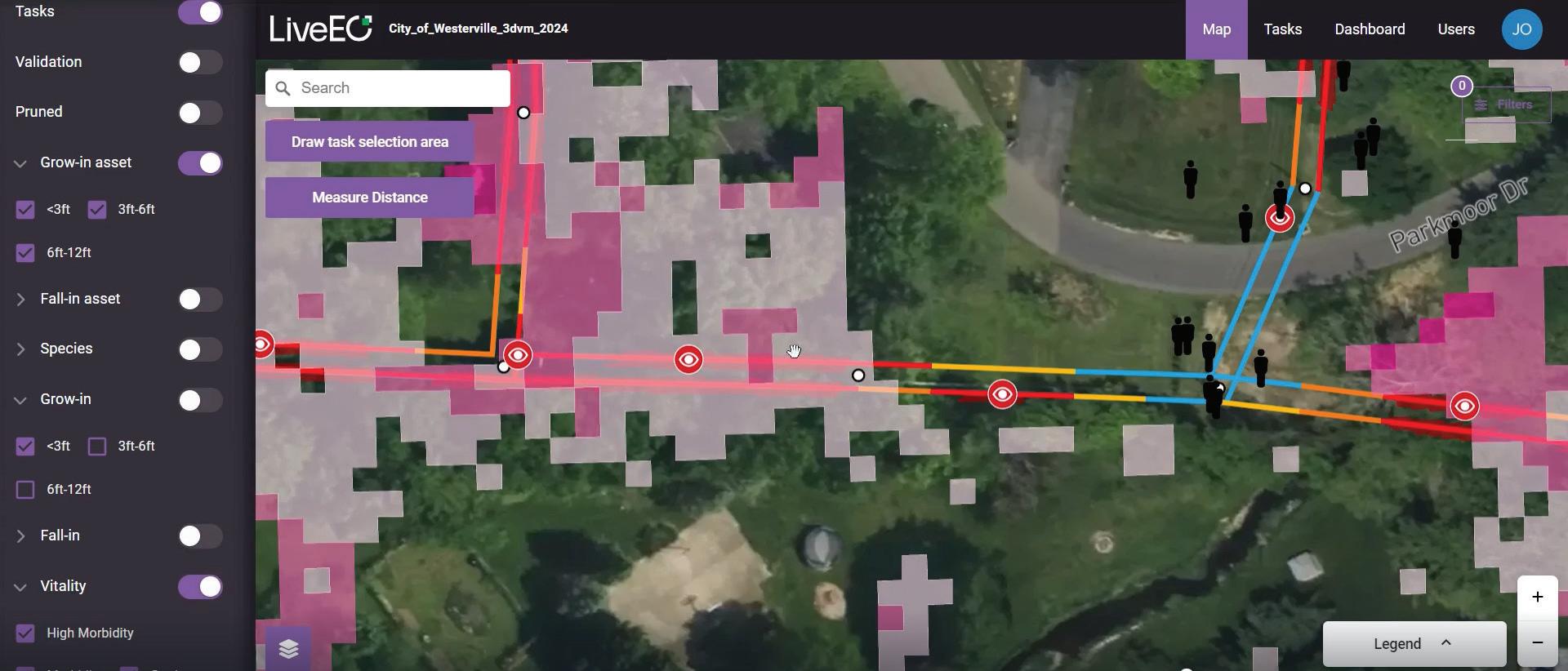
the utility sought a more advanced approach—one that would identify and address vegetation risks before they could disrupt service. This shift aimed not only to enhance grid reliability but also to improve operational efficiency and better prepare for the challenges posed by severe weather.
A key focus of this transformation was the transition from reactive to proactive maintenance. By moving toward prevention, Westerville could reduce the likelihood of outages and improve grid reliability. In addition to proactive measures, enhanced digital integration was a top priority. The utility recognized the need to integrate various platforms and systems to enable real-time data sharing, which would streamline decision-making processes.
Another key goal was to streamline field operations. The utility sought to improve task delegation and optimize fieldwork by implementing digital tools that would allow progress to be tracked in real-time. This included the use of digital records to ensure accurate documentation, improve cost management and minimize errors that often occur with paper-based systems. Additionally, Westerville aimed to create greater transparency across its operations. Moving away from paper-based systems and instituting robust digital record-keeping would help the utility better track ongoing vegetation management efforts, facilitating
This screenshot from the LiveEO app displays grow-in risks within 3 ft of Westerville’s conductors, pinpointing areas for immediate action.
more accurate future planning. This shift would also reduce the reliance on manual data entry, making it easier for teams to monitor progress, identify trends and make data-backed decisions that would enhance long-term vegetation management strategies.
To address the challenges of traditional VM, Westerville Electric Division implemented LiveEO’s Treeline solution, which leverages satellite technology and AI-driven analytics to enhance grid reliability and operational efficiency.
Key aspects included:
Encroachment and Fall-In Risk Analysis. Using high-resolution satellite imagery and AI-powered insights, Treeline identified trees posing a risk of encroachment or potential fall-in along power lines. This allowed Westerville to take preventative action before issues escalated, significantly reducing emergency maintenance needs and vegetation-related outages.
Vitality Assessments. Advanced analytics provided real-time insights into vegetation health, helping Westerville detect hazard trees — or unhealthy vegetation within, or outside the rightof-way (ROW) that have the potential to fall within electrical clearance zones — before they became safety risks. This not
On-the-ground crews play a crucial role in maintaining safe clearance around power lines. With AI-driven insights, Westerville Electric Division ensures pruning efforts are targeted and efficient.
only improved the effectiveness of maintenance operations but also enhanced crew safety by prioritizing the most critical areas.
Predictive Analytics. Treeline’s AI-driven forecasting tools helped Westerville anticipate vegetation risks, enabling more efficient resource allocation. By identifying high-risk areas in advance, the utility could prioritize maintenance efforts, optimize budgets and prevent costly emergency interventions.
Seamless Integration with Esri GIS. Treeline’s integration with Westerville’s existing system allowed for a centralized, real-time view of vegetation risks. This streamlined work management, facilitated data-driven decision-making, and ensured that crews had immediate access to critical insights, improving response times and operational efficiency.
Westerville’s shift to a data-driven, satellite-based vegetation management approach improved grid reliability, optimized resource allocation and enhanced operational efficiency.
Fewer Outages: Westerville achieved a 41% reduction in treerelated outages between 2023 and 2024. By identifying high-risk areas in advance, the utility was able to address potential hazards before they disrupted service. This not only improved grid reliability but also reduced the number of customers affected by outages by half, enhancing overall satisfaction.
Smarter Budgeting: With better data visibility, Westerville could forecast costs more accurately and allocate budgets more efficiently. Predictive analytics helped the utility prioritize highrisk areas, reducing the need for costly emergency maintenance. By demonstrating clear ROI, Westerville was able to justify budget increases for proactive vegetation management, ensuring long-term sustainability.
Data-Driven Decision-Making: The real-time monitoring and analytics provided by Treeline allowed Westerville to move beyond reactive maintenance and take a strategic, risk-based approach. With clear insights into vegetation growth patterns, potential hazards and maintenance priorities, the utility could optimize work planning, allocate resources more effectively, and improve long-term risk mitigation.
Streamlined Operations: The integration of Treeline with Esri GIS and Cityworks eliminated cumbersome manual processes, allowing for real-time data sharing and faster response times. Field teams had access to up-to-date insights, enabling them to execute tasks with greater precision and accountability. Digital workflows reduced inefficiencies, ensuring that maintenance efforts were well-coordinated and that every action taken contributed to the utility’s broader reliability goals.
By harnessing the power of satellite data and AI, Westerville Electric Division turned meaningful insights into tangible results, setting a new standard for municipal utility VM.
The power grid is facing increasing threats from vegetation encroachment, but advanced satellite-based monitoring offers a viable solution. As the Westerville case demonstrates, leveraging

satellite data and AI-driven analysis can lead to substantial reliability improvements, helping utilities maintain service continuity and reduce costs.
JOE DELONG (joseph.delong@westerville.org) is a utility forester for the City of Westerville Electric Division. As an ISA Certified Arborist and ISA Utility Specialist, Joe has dedicated more than a decade to the industry, beginning in 2010 as a grounds person and becoming a skilled tree climber. He manages a team of utility arborists and oversees vegetation contractors.








The IBEW Local 1049 journeyman lineman works for E.J. Electric in Local 3 in Queens, New York.
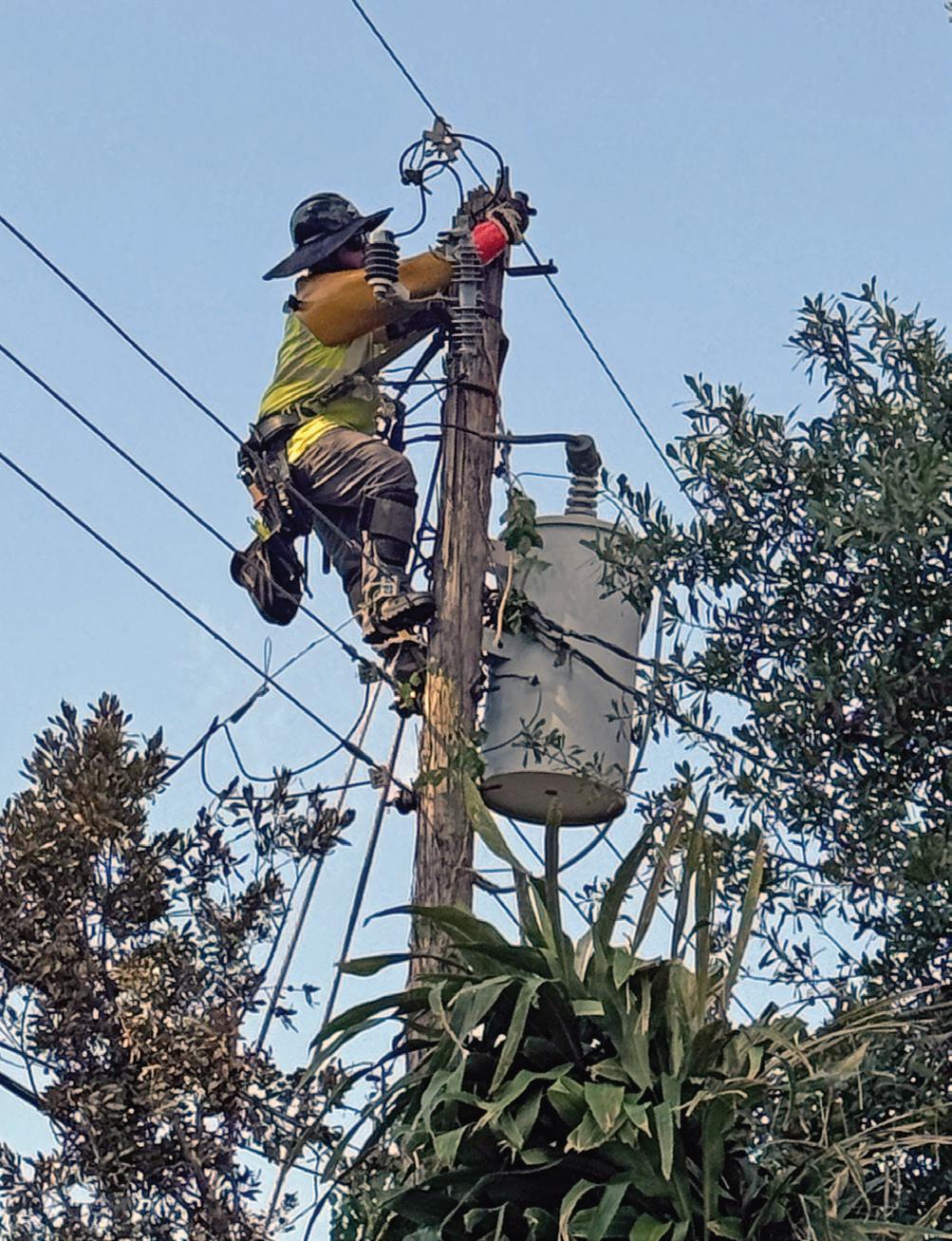
• Born in Long Island, New York.
• Lives in Long Island with his fiancée and two dogs.
• Enjoys playing bass in hard-core punk rock bands, building classic trucks, playing video games and traveling.
• Inspired to get into the line trade by his uncle, who is a journeyman lineman.
• Nominated by Erik Garcia, an apprentice working out of Local 3.
I started in this trade as an apprentice at 30 years old for NEAT in 2012. Having come from a residential electric and maintenance background, this seemed like the logical next step.
As a journeyman lineman, I’ve mostly worked on overhead distribution unit crews doing backyard/rear property work, pole sets, change-overs and reconductoring. Currently, I’m working
in Queens, New York, which is a different change of pace and presents its own challenges. Even the simplest tasks are harder, such as just getting to the job site, getting vehicles moved, getting the general public to respect and adhere to a safe work zone and dealing with the existing conditions of the poles and structures. One day, I’d like to get into helicopter work. The thought of hanging beneath the helicopter, being flown around to towers and doing live-line work seems like a challenge that’s both fun and rewarding.
In my job, there’s always a puzzle to solve. Some tasks seem impossible at first, but you must mentally see the job completed and then work it backwards to get that result. In the end, if we can’t get it done, there’s no one coming after us who will. Meshing personalities and different levels of skill of those around you as well as the concerns of others can also present challenges.
My two impact guns are a lifesaver. Oddly, I use a grinder a lot more now than I ever would have imagined. Common sense and patience are the real best tools though.
Sometimes safety is in the hands and actions of those around you. It’s a team effort to bring everyone home safely. Nobody should underestimate their own importance in that role.
One night, I got called out to respond to an outage. Huge winds knocked down a 55-ft, three-phase, double-circuit pole along the railroad. One set was a dead end, and the other was a straight-through. After clearance and grounds, my pole buddy, Justin Marbot, and I had to climb it. We were on that pole for eight hours in the pitch black. It was one of those things you hate while you’re doing it, but you look back and laugh and tell stories about it.
You can really shape where it’s going by how you interact with the apprentices and coworkers. Each one of us controls where this ship is sailing, so put your best foot forward. I would do it all over again in a heartbeat if I could, but I’d probably start earlier. This is the best trade in the world with some of the best people in the world.
MEDIA SALES
Account Manager
Brent Eklund
Phone: 303-888-8492
Email: beklund@endeavorb2b.com
Account Executive
Andreja Williamson
Phone: 630-721-0712
Email: awilliamson@endeavorb2b.com
INTERNATIONAL SALES
Europe
Sarah Howell
Phone: +44 7935 299 884
Email: showell@endeavorb2b.com
South America, Central America
Fernanda Vega
Phone: +55 21 97673-9692
Email: fvega@endeavorb2b.com
Middle East, India, Asia, Australia, Africa
Saurabh Kapoor
Email: skapoor@endeavorb2b.com
EVENT SALES
Account Manager
John Blackwell
Phone: 518-339-4511
Email: jblackwell@endeavorb2b.com
Account Manager
Denne Johnson
Phone: 607-644-2050
Email: djohnson@endeavorb2b.com
International Linemen’s Rodeo, and Events
Sam Posa
Phone: 913-515-6604
Email: sposa@endeavorb2b.com
MEMBERSHIP SALES
ANALYTICS INSTITUTE
Membership Development Manager
James Wingate
Phone: 404-226-3756
Email: jwingate@endeavorb2b.com
Utility Analytics Institute, Smart Utility Summit and Smart Water Summit
I’ve spent over a decade helping utilities design the telecom systems that keep their operations running. That was not my original plan — I went to school to become an electrical engineer — but I’m glad my career turned out this way.
When I explain my work to people outside the industry, I describe it like this: one group produces electricity, another delivers it to homes and businesses. Not long ago, if something went wrong along that delivery path, there was only one way to find out: we sent a crew in a truck to hunt it down, mile by mile.

That’s no longer the case. Today, there’s a web of meters and sensors all communicating with a central control system. Those devices are only as smart as the network behind them. When the signal drops, so does the visibility.
We’re not just pushing power anymore; we’re receiving information from every corner of the grid. And we’re facing a demographic challenge as the veterans who helped build this infrastructure in the past thirty years start to retire. So, if you’re a young telecom engineer wondering where to make a real impact, this is the place.
One day, you’re working with a utility that serves a few hundred thousand people; the next day, it’s with one that covers several states. You could be routing around mountain ranges or designing coverage for a dense city center. There’s rarely a clear playbook as we build out the grid’s eyes and ears.
It’s also what I enjoy so much about this field. There isn’t a rigid template. You’ll need to figure things out and often, you’re designing as you go. That kind of uncertainty isn’t for everyone, but it’s part of what makes the work interesting.
Like many engineers in this field, I didn’t learn the essentials in a classroom. Real-world telecom rarely shows up in more than a few theory-heavy courses. What I’ve learned came from job sites, under pressure, while solving problems alongside other engineers.
The most effective teams I’ve seen combine experience and speed. That might be a veteran who’s seen every substation design under the sun, paired with someone new who can stress-test it digitally. Both are necessary, and neither works alone.
I was lucky to come up that way myself. I worked with engineers who could walk into a cabinet and point to gear that hadn’t been touched since the ’90s — and explain exactly why.
That’s why saying “yes” early in your career is so important. Say yes to the field visit. Say yes to the fiber run. Say yes to standing up the rack. You’ll figure out what you’re good at later, but only if you put yourself in situations where you can learn. The best knowledge transfers I’ve seen happen during joint site visits, when a retiring engineer walks the site and a new engineer listens and learns.
That shift in skill sets is already proving critical in areas like network design, where younger engineers will face job challenges that play to their strengths. They’re entering the industry already thinking in systems and layers, switching easily between radio frequency maps and the data traffic flows. Their fluency with digital tools enables them to answer big-picture questions on the spot.
Consider, for example, the move to private LTE — carriergrade networks that utilities own and control. Private LTE offers more bandwidth and lower latency compared to legacy systems. It also enables utilities to consolidate multiple use cases, such as AMI, SCADA, wildfire mitigation and substation automation, onto a single backbone.

Building a private LTE network requires significant investment, so it’s essential to approach it with a holistic strategy. This is where the next generation of engineers can make a real difference. Many can quickly develop skillsets using modern telecom planning software tools to aid the larger team in selecting optimal site locations, designing efficient network architectures, solving complex interoperability challenges, and performing wireless propagation modeling. Their fresh perspectives and digital fluency can help utilities get the most out of these networks from day one.
This isn’t abstract work.
Technology will keep evolving and so existing systems will face even more pressure. That’s why this industry will need people who can think about the whole system, not just their piece of it. This work isn’t always easy. For a young engineer, that means showing up, listening, asking questions, sometimes in less-thanideal conditions. But when those efforts help keep critical facilities like keeping the lights on or support systems that reduce wildfire risk, it becomes clear just how important the role is.
LUKE MUSSER, P.E., is a Instrumentation and Controls engineer at Black & Veatch.


Transmission & Distribution World is the authoritative source for power-delivery professionals, offering an unbiased perspective on the business trends and technical innovations shaping the electric utility industry.
Each month you’ll get the latest on electrical transmission & distribution, substations, construction, operation and maintenance, automation, new product reviews, industry news and more.
Sign up now at:
Learn more about how the Endeavor Energy Market is providing utility professionals with insights for architecting a more sustainable and resilient future. www.endeavorbusinessmedia.com/markets-we-serve/energy/
Choose from over 15 newsletters and stay current with award winning content, breaking news, and so much more!
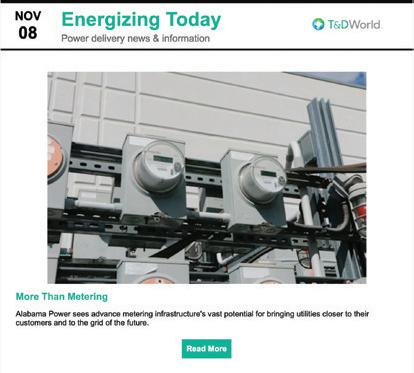

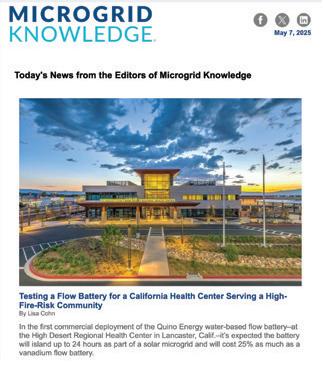
Scan any of these QR codes or simply enter the URL into your browser to sign up today.

tdworld.com/ nlsignup

energytech.com/ nlsignup
Stay connected to the energy world with exclusive content, special reports and the latest product launches by visiting us online. By joining the energy community, you will have

microgridknowledge.com/ nlsignup
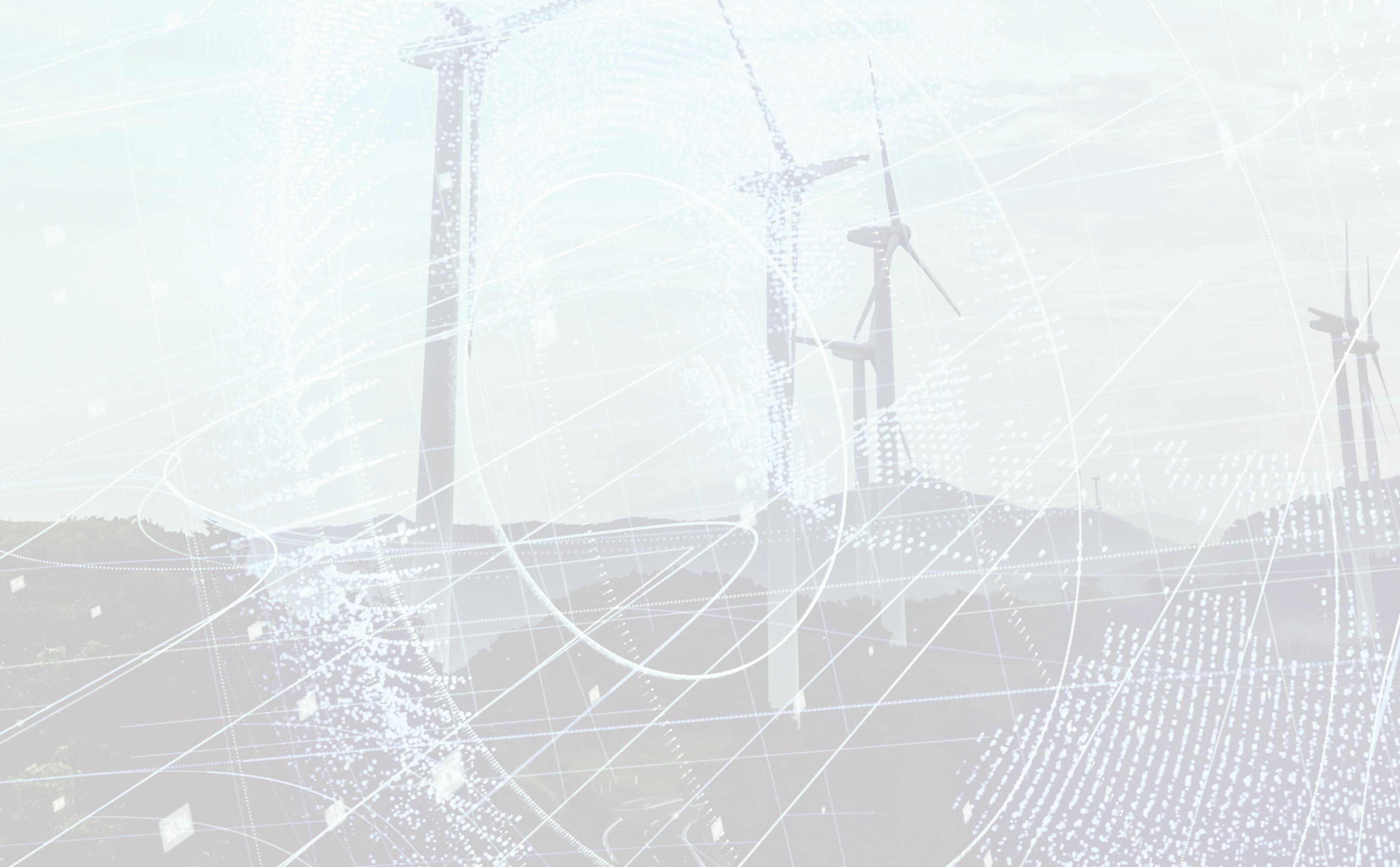




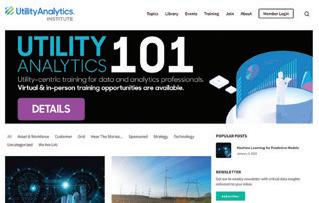
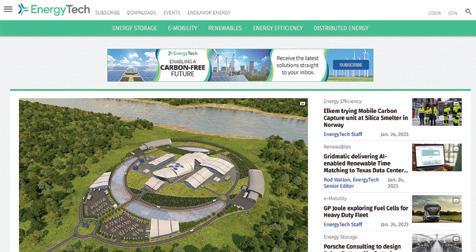
tdworld.com | microgridknowledge.com | utilityanalytics.com | energytech.com
to the latest mustread news, technology solutions, energy policies, data analytics, investment strategies and much more. Become a member by signing up to one (or all) of our newsletters, or by registering online.